

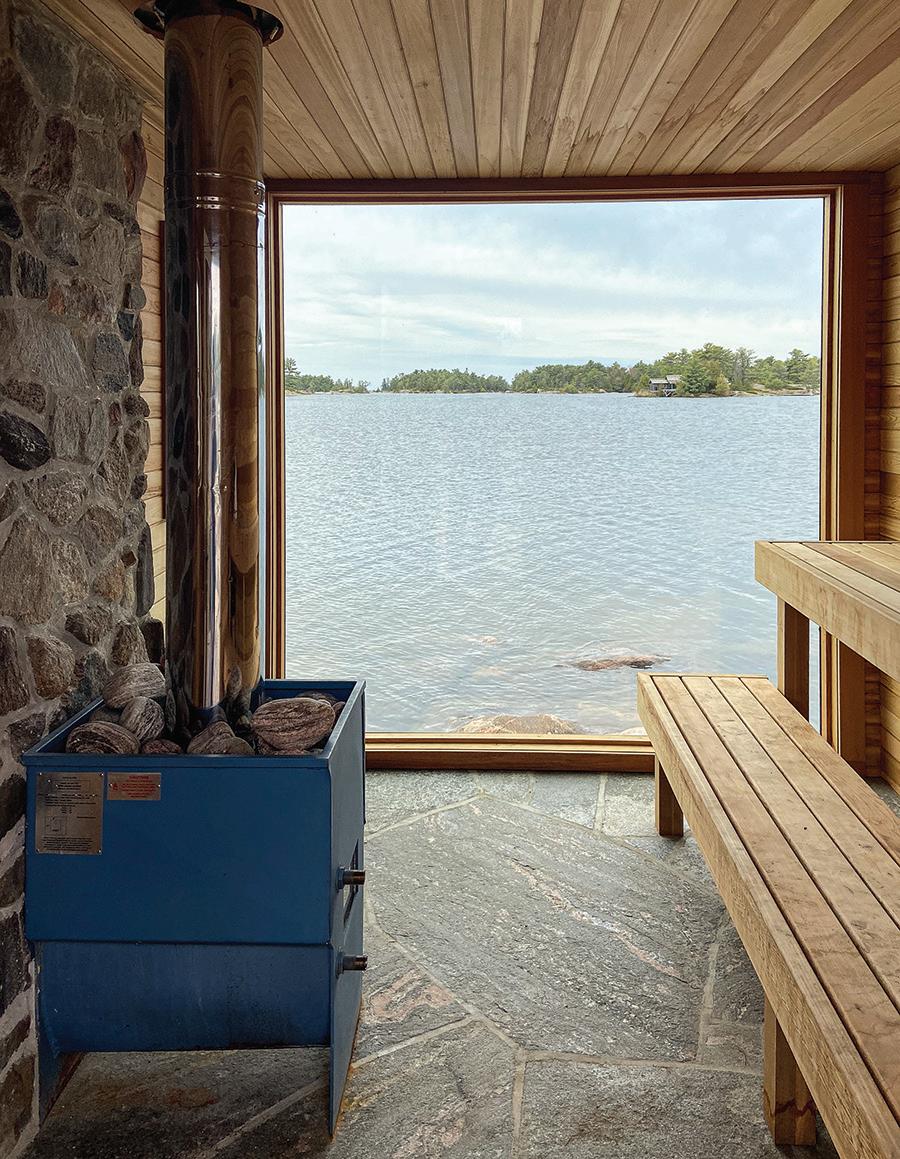
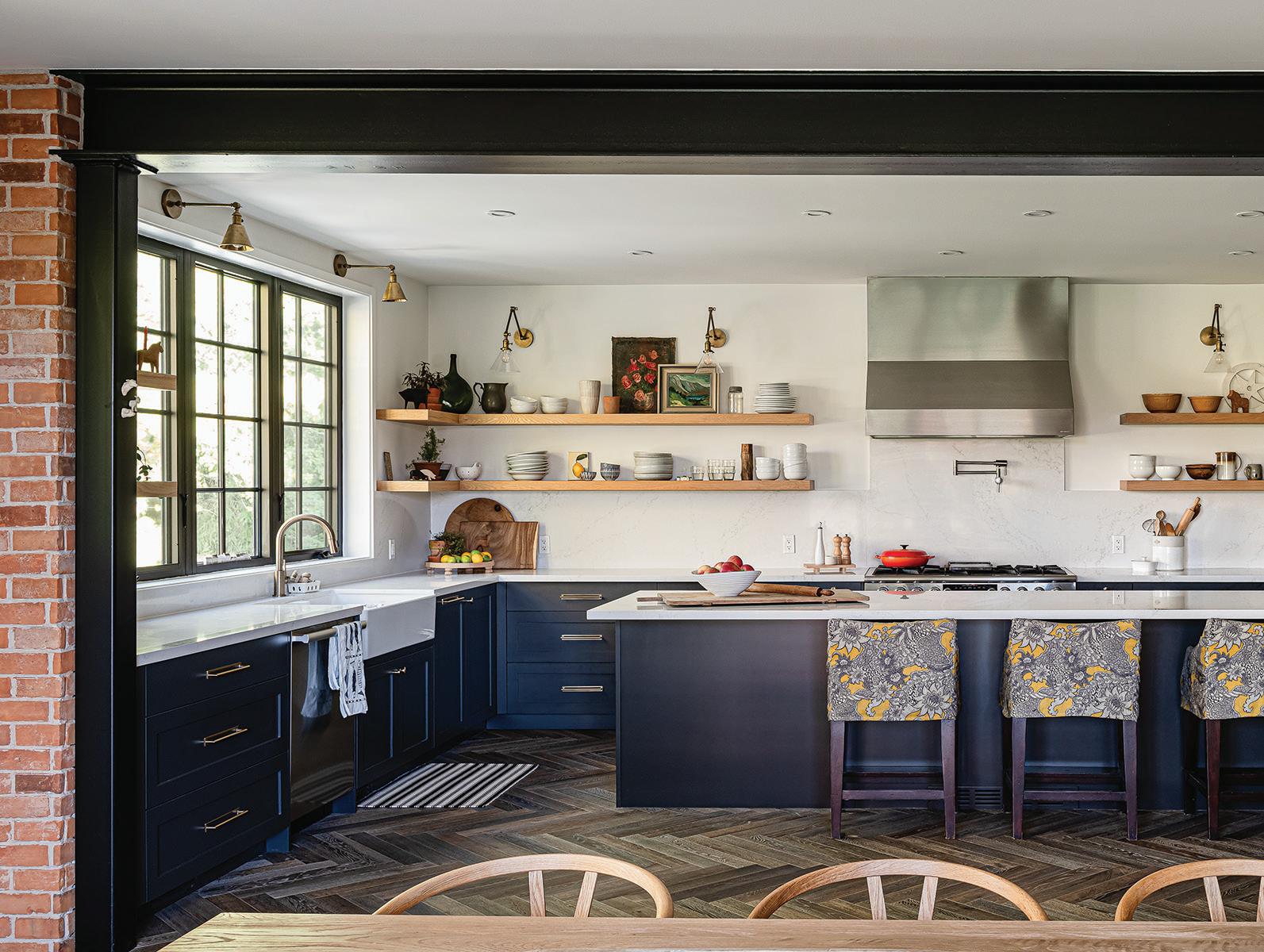
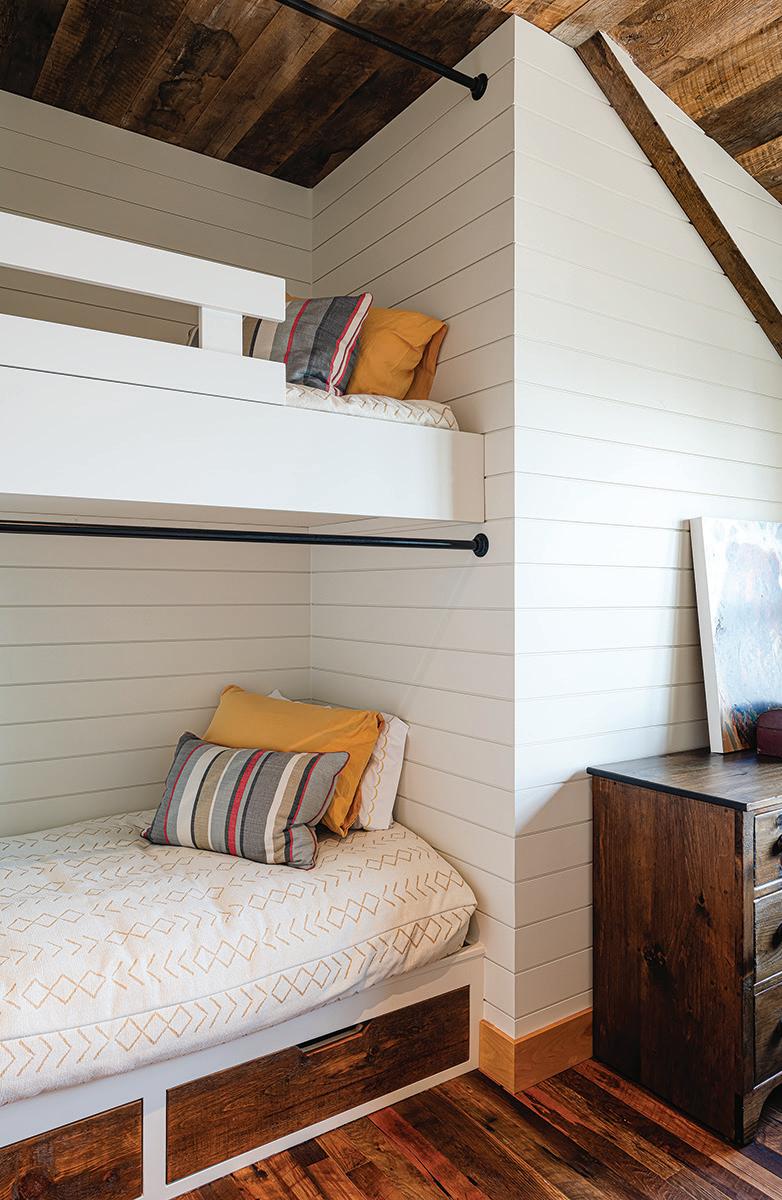














In the stillness of water and the gentle sway of trees, find a space that inspires your inner calm. A landscape that invites contemplation — where light dances, thoughts settle, and clarity unfolds. Designed for quiet moments and deeper connection. Designed for you.




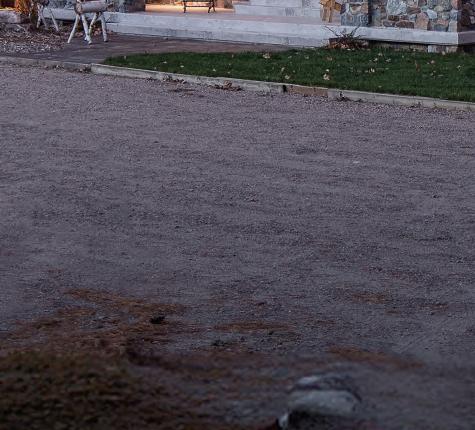












Gorgeous sunsets, fresh breeze, and great company – with a custom Hutten & Co. landscape, you’ll never want to go inside.






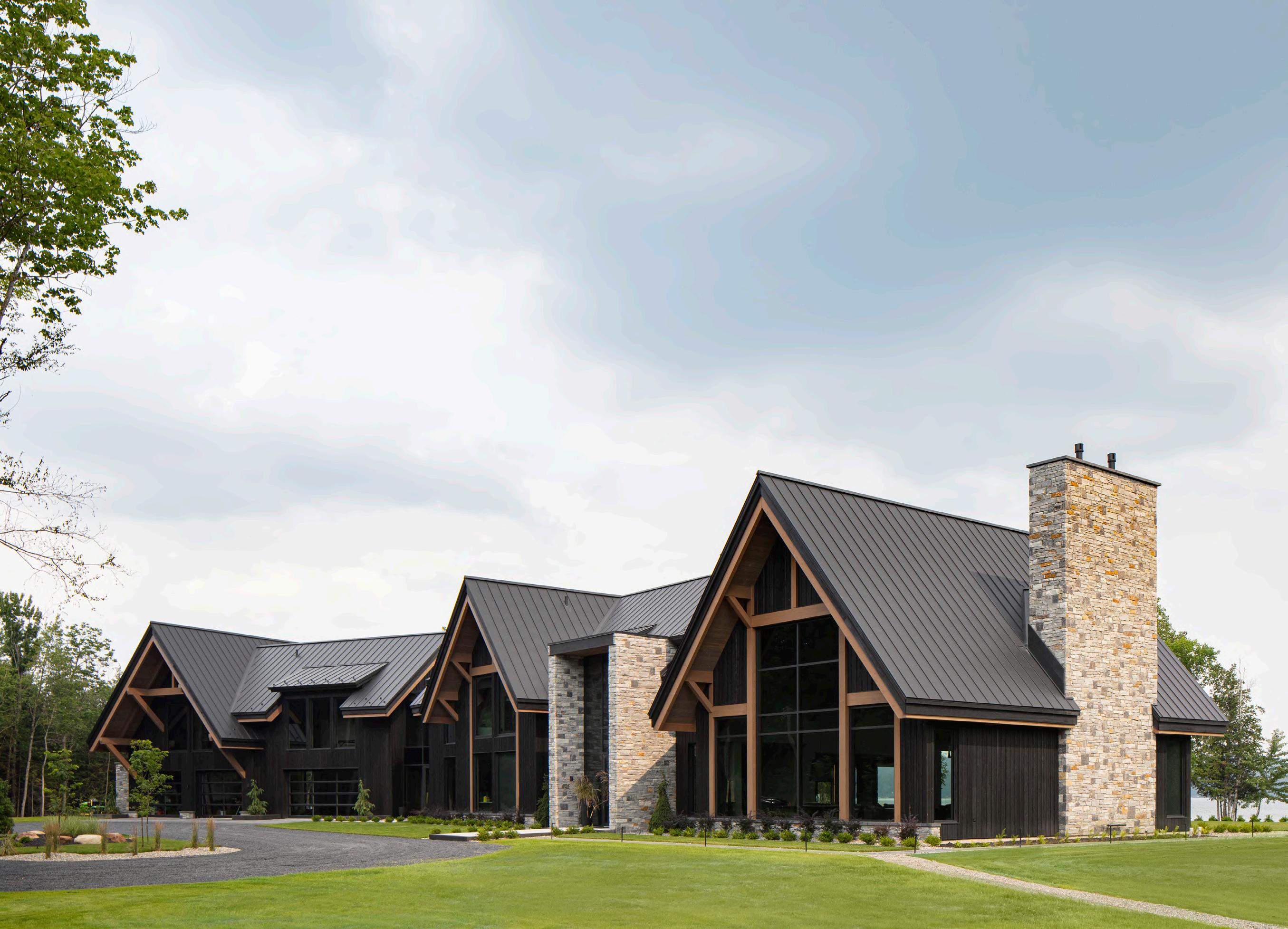






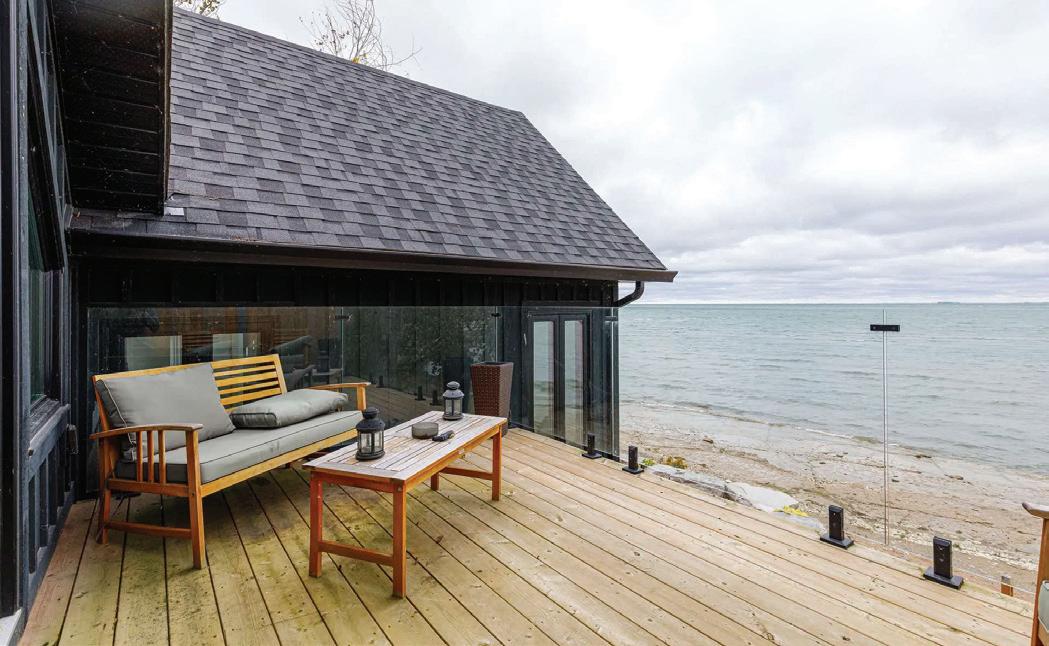



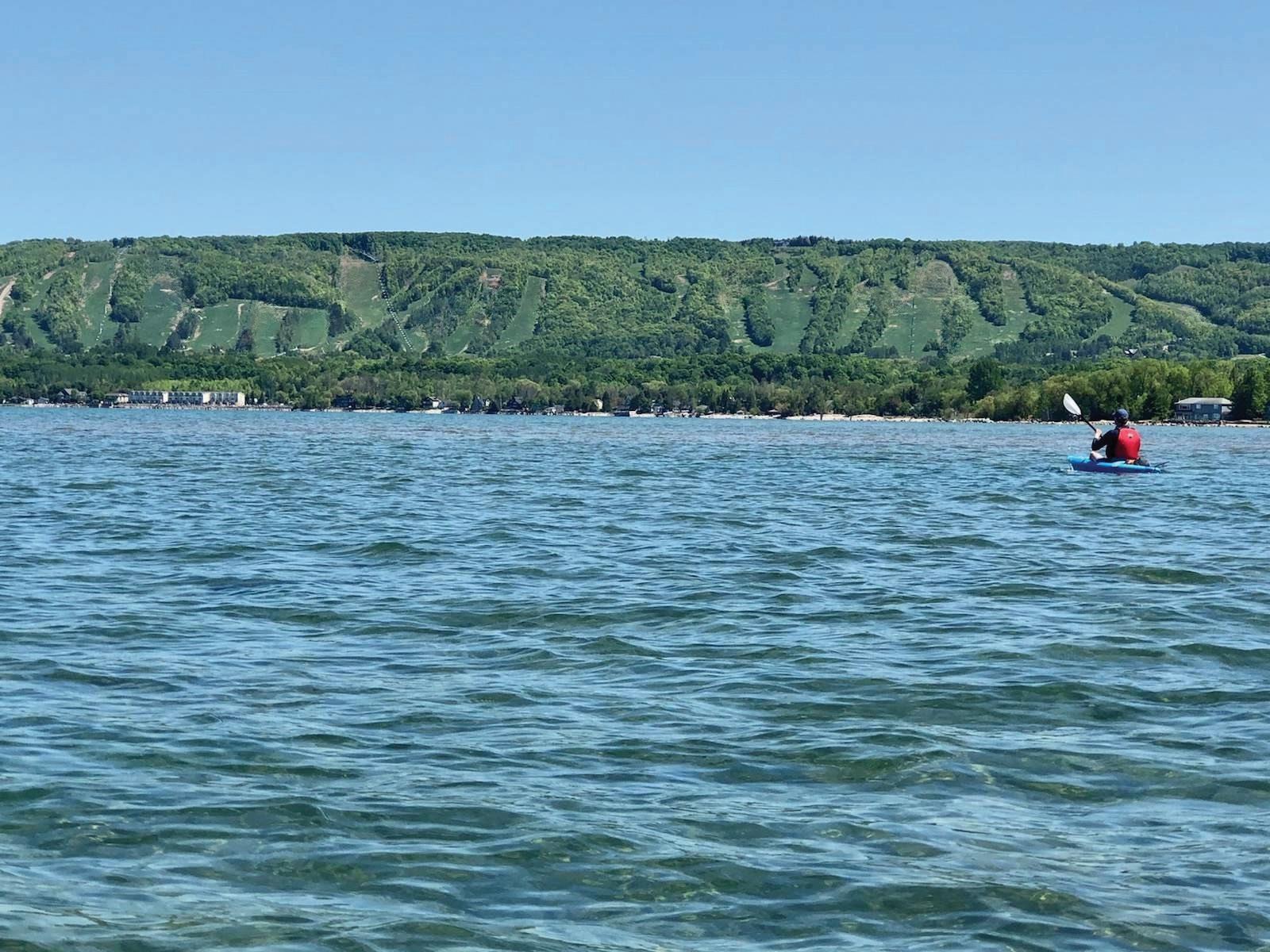
With 30 years experience managing money for high-net-worth investors, we have the expertise to preserve and grow your wealth.

Douglas Easton, CFA Portfolio Manager & Wealth Advisor (705) 445-2402 (416) 358-6054 douglas.easton@nbc.ca
Douglas Easton, CFA has been a discretionary Portfolio Manager since 1996 managing money for high-net-worth private investors.
He is a CFA charter holder since 1992 and graduate of the University of Toronto in Commerce and Economics.
Contact us today

Tax Efficient Portfolio Management
Financial Planning
Retirement Planning
Will and Estate Planning
Insurance Solutions
Banking Solutions
Client Testimonials:
“We met Douglas in 2003 after I sold one of my businesses. My wife and I highly recommend Douglas as an expert money manager whether you’re building your investment savings or are retired and living off it, like us.”
– Nick F.
“Douglas has been a godsend. He has not only preserved my assets but allowed them to flourish in ways I could not have imagined, especially in challenging markets.”
– Marcia M.
“Douglas has excellent portfolio investment management skills that produce results in an efficient and effective manner.”
– Judith C.












Nimble and powerf ul, t he RT V 520 is built to handle everyt hing f rom weekend chores to year-round propert y maintenance. W it h easy operat ion, a comfortable ride, and reliable performance, it ’s t he perfect ut ilit y vehicle for homeowners who want to get more done wit hout t he hassle




















Cara Williams Editor-In-Chief cara@escarpmentmagazine.ca
Water is part of life here. It’s in the tug of the current beneath a paddle, the morning light on Georgian Bay, the sound of waves folding onto the shore at dusk. We don’t just visit the water—we live beside it and shape our days around it.
Earlier this summer, I watched my kids take a running leap off the Thornbury pier and crash into the bay below—shrieking, laughing, completely fearless. It struck me as a kind of metaphor. My son just graduated from high school, and my daughter from grade school. They’re both standing on the edge of something new, getting ready to jump in. That moment has stayed with me, maybe because I know how fast these seasons go. And maybe because I’m the one lingering on the dock, watching— holding onto the well-worn routines that make this place feel like home: early mornings on the porch, a walk through the woods, a dip in the bay at sundown.

That’s the pull of this place. It’s in the green fairways cut into the base of the Escarpment. It’s in the shimmer of the Trent-Severn Waterway winding past locks and little towns. It’s in the clink of a glass at a local brewery after a long, dusty ride. There’s something about
summer here that feels steady and familiar, even as everything else keeps moving forward.
In this issue, we’ve leaned into that feeling. Whether it’s a walk through Trout Hollow, where John Muir once wandered, or a lazy float past sandy banks, we’ve filled these pages with local stories and quiet adventures. Because summer doesn’t need to be loud to be memorable. Sometimes it’s the stillness—the shade, the hum of crickets, the rhythm of a paddle— that stays with us longest.
You’ll find ideas for close-tohome escapes, trails that lead to hidden views, bits of history tucked into familiar places, and maybe a few secret spots we probably shouldn’t be sharing. But that’s what summer’s for—getting out there, making memories, and passing them along.
Wherever this season takes you, I hope you find something that feels just right.
See you out there,


GEORGIAN



PUBLISHER/OWNER
Clay Dolan clay@escarpmentmagazine.ca
EDITOR- IN - CHIEF
Cara Williams cara@escarpmentmagazine.ca
ART DIRECTOR
Bradley Reinhardt bradley@escarpmentmagazine.ca
GRAPHIC DESIGNER
Alyshia Laube alyshia@escarpmentmagazine.ca
Katie Ballantyne, Elizabeth Rush Brooks, John Wallace Burton, Gill Cameron, Don Campbell, Sarah Carlson, Kelsey Chernes, Nicole D’Amico, Kennedy Deneau, Deena Dolan, Candace Louise Donna Fritsch, Andrew Dzenis, Nick Eyles, Heather Fields, Marc Huminilowycz, Sean Landreth, Rick Layzell, Brendan Mackay, Shannon MacDougall, Ken Maher, Trish Magwood, Marcia Masino, Wade Mitchell, Mark O’Grady, Len Pizzey, Nicola Ross, Robert Saunders, Melissa Shaw, Kirstin Shollig, Riley Snelling, Catherine Staples, Kianna Sunshine, May Tettero, Sky Tettero-Crosby, William Tam, Tom Thomson, Robin Todd, Desmond Von Teichman, Aidan Ware, Jody Wilson, Shelby Worts
MARKETING & ADVERTISING ADVERTISING
Geoffrey Cameron 416.910.9649 geoff@escarpmentmagazine.ca
info@escarpmentmagazine.ca OFFICE 519.599.7545
Escarpment® is published four times a year by Georgian Bay Living— Escarpment® Magazine Inc. 25,000 copies. Distributed free of charge to hotels, shops, clubs, businesses and services all throughout Simcoe, Grey & Bruce Counties.
Paid Subscription holders have guaranteed mail delivery.
Attention Postmaster: Please direct post office returns and changes of address to GBL—Escarpment® Magazine Inc., 183 Marsh Street, Unit 4, PO Box 107, Clarksburg, ON, N0H 1J0
Subscription rate: 4 issues (one year), $22.75 HST incl.
No part or portions of this publication may be reproduced without written permission of the Editor. Opinions and statements written by contributors of Escarpment® and that appear in this issue or others are entirely their own responsibility and do not necessarily reflect the opinions of the owner of GBL—Escarpment® Magazine Inc.
Georgian Bay Living—Escarpment Magazine® and Escarpment® is a registered trademark of Georgian Bay Living— Escarpment® Magazine Inc. ©2025 All rights reserved.
Escarpment is printed in a Canadian facility that operates in strict compliance to environmental concerns.



From headwaters to Huron, the Saugeen River offers paddling adventures tailored to every style—whether you’re craving a quick escape or a multi-day journey.
By Cara Williams | Photography by Clay Dolan


If summer has a soundtrack, it’s the hush of a paddle slicing through still water, the call of a red-winged blackbird from the reeds, the plunk of a frog leaping into the shallows.
On the Saugeen River, that soundtrack plays on repeat for over 100 kilometres, winding from farmland near Hanover all the way to the sandy shores of Lake Huron.
For paddlers, the Saugeen is as good as it gets: accessible, scenic, and just wild enough. Whether you’re launching for a lazy afternoon float or a multi-day backcountry-style adventure, the Saugeen delivers—with gentle current, riverside campsites, small-town stopovers, and plenty of space to drift, dream, and disconnect from the noise.
The Saugeen is divided into well-marked access points, making it easy to customize your trip. Thorncrest Outfitters, based in Southampton, offers canoe and kayak rentals, safety gear, and shuttle services to and from many sections of the river.
Full river trips typically begin near Hanover and take three to four days to complete. Overnight paddlers can plan their route around conservation areas like McBeath Conservation area and Saugeen Bluffs which offer riverside tenting, picnic shelters, and basic amenities. For day-trippers, there are plenty of shorter routes that still deliver a generous dose of summer magic.








This scenic paddle begins upstream of Paisley and ends right in town— perfect for a relaxed morning on the water followed by lunch on a patio. The river meanders through farmland and low forested banks, with enough current to keep things moving without requiring much effort. Paisley itself is a charming stopover with riverside parks, historic buildings, and great food. It’s a favourite section among locals for good reason.
This relaxed 7-km paddle is ideal for families or first-timers. Here, the Saugeen stretches wide and inviting. Kids will cheer at the sight of gentle rapids, while turtles drift lazily in clear waters, and sandy banks offer excellent picnic spots.
Approaching Denny’s Dam, the shoreline stays remarkably green and natural, despite being close to Southampton. The dam itself was rebuilt after a huge flood in 1912 took out the original bridge. Though it no longer generates electricity, the dam plays a crucial role in water management and is popular with anglers during salmon and trout seasons.
Conveniently, Thorncrest Outfitters awaits just steps from your pull-out point, ready to handle gear and wrap up your carefree day.

FI N D YOURSELF IN NATURE. Just a few minutes from Collingwood in one of Canada’s18 UNESCO biosphere reserves, are 370 unspoiled acres of mature hardwood forest We are here, high atop the Niagara Escarpment, where an incredible collection of experiences and memories waits for you, and for every member of your family A Breathtaking World of Adventure in Nature!







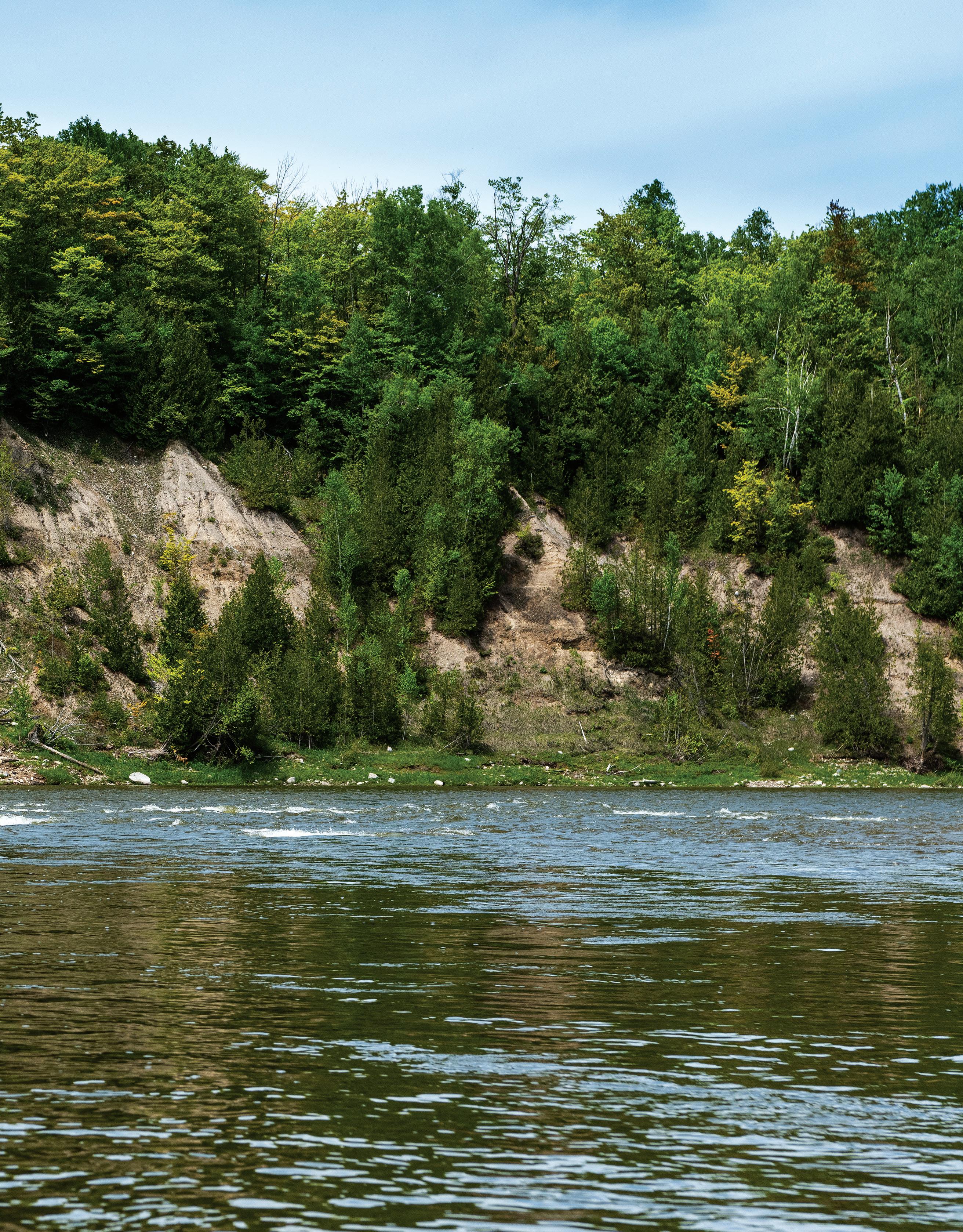
Some paddlers go the distance. Some float for an hour or two. Either way, the Saugeen meets you where you are—and carries you just a little further than you thought you’d go.

For paddlers looking to truly disconnect, a full descent of the Saugeen is both manageable and rewarding. Over 100 km of water stretches from the headwaters near Hanover to the river’s mouth at Lake Huron. Campsites like McBeath Conservation Area and Saugeen Bluffs are spaced out at comfortable intervals. Expect changing terrain—open stretches, shaded corridors, light rapids, and even a few long-forgotten pilings from the river’s logging days.
Along the way, you’ll pass through communities with rich histories: Walkerton, Paisley, and finally Southampton, where the Saugeen spills into the great lake. The river’s name likely comes from the Ojibwe word Zaagiing, meaning “at the outlet.” Long before canoe rentals and packed lunches, this was an essential travel route for the Saugeen Ojibway Nation, and later, settlers who floated massive log booms downstream to feed local mills.
You don’t need much to get started—just a paddle, a drybag, and maybe a waterproof speaker. But a bit of planning goes a long way.
• Gear & Shuttle: thorncrestoutfitters.com/saugeenriver
• Camping Info: ontarioconservationareas.ca
• River and Wildlife Details: saugeenconservation.ca
The Saugeen doesn’t shout for attention. It invites you in gently— quiet bends, sun-warmed water, and a sense that you’ve slipped into a slower rhythm. You won’t find luxury docks or roaring crowds here. Just stories in the current and a thousand ways to return to yourself.
Some paddlers go the distance. Some float for an hour or two. Either way, the Saugeen meets you where you are—and carries you just a little further than you thought you’d go. E
www.collingwoodcollective.ca for registration details.
















Spanning 386 km and 44 locks, Ontario’s Trent-Severn Waterway is more than a feat of engineering—it’s a scenic journey through a landscape of lakes, rivers, and timeless charm.
By Rick Layzell | Photography by Clay Dolan

Ontario is home to a truly one-of-a-kind experience: the Trent-Severn Waterway (TSW). I can state from personal experience that dreaming about exploring this beautiful slice of Canada is just the beginning—because living it is awesome!
Following are just a few highlights of this incredible engineering marvel:
• The TSW was an 87-year construction feat that began in 1833 and finished in 1920—imagine the equipment used in the process!
• The waterway spans 386 km—that’s the same distance as driving from Toronto to Sudbury.
• There are a total of 15 unique swing bridges along the system, and the two largest hydraulic locks in the world (Peterborough and Kirkfield) both need to be on your bucket list.
• The adventure begins at Lock 1 in Trenton and ends at Lock 45 in Port Severn, with 44 uniquely glorious locks along the system (Locks 11 and 12 are a joint operation).
Hundreds of passionate personnel at Parks Canada are charged with overseeing decision-making and operational elements of the TSW. Their smiling faces wrap you in a warm, welcoming hug on each visit.
Parks Canada has done an incredible job crafting waterway experiences that inspire and attract both land and water-based travellers. Most lock stations feature picnic tables or seating areas perfectly positioned for viewing the boats, while others offer glamping experiences like oTENTiks (a cross between a tent and cabin, these raised platform shelters come with beds and basic furnishings for a hassle-free stay). The quiet and serene lock locations deliver a waterway experience like no other.
The “Single Lock & Return” pass continues to be the top seller, and these users are typically day boaters—personal watercraft or pontoon boat owners—who are looking for a quick trip on the TSW. Whether they’re showing off the waterway to friends, visiting one of the countless attractions, or stopping to check out a local shop, the options are endless.


Begin your home search by browsing through our extensive collection of newly built homes. We collaborate with reputable builders to offer a diverse range of options, ensuring that you find the perfect fit.

Use VR technology to tour your potential home, exploring custom layouts, finishes, and furnishings. This immersive experience allows you to visualize yourself in the space before making a decision.

Our knowledgeable sales staff will connect you with your preferred builder to help make your dream home a reality.
Explore our top collection of Georgian Bay properties from the best builders within the region.
The Property LinQ’s home buying experience was conceptualized with you in mind. View multiple projects under one roof, compare floor plan options seamlessly and experience our industry leading VR technology to see your dream home come to life.


And make no mistake: the TSW sees plenty of big yachts every year, and it’s not unusual to witness small boats nestled alongside 40 or 50-footers traversing up or down a lock chamber in perfect harmony.
Many locks are located in or near quaint rural communities, with local businesses embracing and enhancing the visitor experience. Orillia, Bobcaygeon, and Fenelon Falls are all standout towns with great shopping, restaurants, waterfront walking trails, and amenities—plus many more waiting to be explored along the TSW.
All vessels are welcome on the TSW, and events like Lock & Paddle in mid-July are truly special. During this one-day event, Parks Canada invites canoeists and kayakers to come together to fill the Peterborough Lift Lock. It’s simply incredible to witness this massive structure jam-packed with over 400 canoes and kayaks.
I’ve travelled the locks on personal watercraft, small runabouts, and now on our 34’ Regal cruiser. Each experience has brought its own moments and memories with family and friends. The summer of 2012 holds some of my favourite memories: my son Steven and I, along with his friend Luke, set off from Barrie to Port Severn for an overnight adventure aboard a 24’ jet boat. I’d rigged the boat with a camper-style enclosure, turning it into our floating tent so we could sleep onboard after a full day of laughter, discovery, and new experiences on the water. And we did it all—from learning how to “lock through” at Lock 42, to cruising along the Severn River (the house with




the authentic red CN train on the grounds is not to be missed), to hearing the boys’ voices echo as we were lowered down Swift Rapids—the deepest single-chambered lock on the system with a 47’ drop. We watched the expert staff at Lock 45 raise and lower the last lock on the system—by hand, no less! So many memories.
When we acquired our first cruiser, Meant to Be, in early spring of 2020, we intended to create moments on the TSW. I wasn’t really planning for it to be the weekend after we took delivery... but a mere six days later, there we were: four of us, heading through Locks 42 to 45 en route to Georgian Bay. I was jittery (aka nervous as heck) at the helm—as it was a much larger boat than I had ever owned—but the awesome Parks personnel once again expertly guided us into the locks and through the system.
The Big Chute Marine Railway (Lock 44) is a worldrenowned, truly unique lock that actually slings boats and lifts them up or down on a carriage. The photo moments from the
bow as you, your boat, and your crew travel the 58’ rise or descent are simply stunning. Big Chute is the top land-based tourist destination on the TSW and has plenty of amenities including camping, washrooms, a delightful picnic area, overflow parking, and interpretive signage detailing the history of this oneof-a-kind lock station.
Come by boat—any kind of boat—or include the TSW in your summer travel plans by car. Take a few moments to stop at one of the locks along the way and admire the boats heading up or down the system. Continue your adventure by exploring one of the incredible small towns nearby: sample cute coffee shops, local foods, and an assortment of craft beverages.
The Trent-Severn Waterway is a truly unique and marvellous adventure to be shared and enjoyed by all. With 44 options, one or more lock visits should definitely be on your list—by land or by water. E















Retrace the footsteps of renowned naturalist John Muir on Meaford’s Trout Hollow Trail— where beauty and history meet a little-known chapter in the life of one of the world’s greatest conservationists.
By Cara Williams | Photography by Clay Dolan
AS I STEP ONTO the leaf-dappled path at Trout Hollow in Meaford, the morning air is thick with birdsong and the earthy scent of early summer. This trail, winding gently through the woods along the Bighead River, is more than just a scenic hike. It’s a passage through time—into a lesser-known chapter of John Muir’s life, long before he became a leading voice for wilderness preservation.
Most people know Muir as the Scottish-born American naturalist who championed the wild landscapes of the western United States. He founded the Sierra Club in 1892, inspired the creation of Yosemite and Sequoia National Parks, and famously wrote, “The mountains are calling and I must go.” But did you know he once lived in this quiet corner of Ontario?
Born on April 21, 1838, in Dunbar, Scotland, John Muir immigrated to the United States with his family in 1849. In 1864, fresh from university and in his mid-twenties, he travelled north and spent nearly two years in Meaford. Those years would prove pivotal—shaping the ecological curiosity that would later define his legacy.
The Trout Hollow Trail is a 15-kilometre walking loop that traces both sides of the Bighead River. A moderate hike, it meanders through mature forest, over wooden footbridges, and past limestone outcroppings and ruins. Built by Grey Sauble Conservation in partnership with private landowners and officially opened in 2002, the trail follows historic routes likely used by generations of locals. The full loop is composed of 7.5 km on each side of the river, but you don’t need to complete the entire circuit. Several shorter out-and-back options still deliver



a rewarding mix of scenery and story. The trail is well-marked and gently undulating, with a few rocky or rooty sections but nothing too technical. It’s ideal for intermediate hikers, families, and leashed dogs with a bit of stamina. If you’re lucky, you might spot salmon, trout, deer, wild turkeys—or even a great blue heron wading along the bank.
As you follow the west side of the river, interpretive signposts guide you through the natural and cultural history of the site. Here, the trail tells the story of brothers William and David Trout—enterprising millwrights and early settlers who operated the sawmill where John Muir briefly worked in 1864 as a mechanical assistant and craftsman. Muir lodged nearby in a modest cabin and spent his free hours wandering the woods, sketching wildflowers and experimenting with plant presses. The Trout family name—fittingly, or perhaps with a touch of irony—still echoes in the area, as trout and salmon continue to run the same banks once shaped by industry. Remarkably, some Trout descendants still live nearby and have helped preserve this landscape and its story.
Much of that industry remains—its bones softened by time
Immerse yourself in a vibrant community of resort-style living on the Georgian Bay waterfront in Meaford. From sunny days on the water to tranquil evenings in nature’s embrace, Aspen Shores offers an idyllic all-season getaway you’ll love to call home. Discover a place where every day feels like a vacation.


and overgrowth. The trail passes through the former site of the Georgian Bay Milling and Power Company, where remnants of stone foundations, sluice gates, and sections of the old S pipe still peek through the underbrush. Not far from here is the approximate location of the original Trout sawmill. Though little remains beyond moss-covered stonework and the steady ripple of the Bighead River, the site pulses with history. Parts of the trail trace the upper banks of century-old hydro and milling channels, now lined with cedar groves, trilliums, and columbine. It’s easy to see how Muir found inspiration here.
Around the two-kilometre mark, I pause beside the river, where the sawmill once stood. A few rough stones are all that remain, but in the quiet hum of the forest, it’s easy to imagine the clang of iron, the creak of timber—and John, sleeves rolled, immersed in both physical work and the awe of his surroundings.
He would later write: “I set off on the first of my long lonely excursions, botanising in glorious freedom around the Great Lakes and wandering through innumerable tamarac and arborvitae swamps, and forests of maple, basswood, ash, elm, balsam, fir, pine, spruce, hemlock... glorying in the fresh cool beauty and
charm of the bog and meadow heathworts, grasses, carices, ferns, mosses, liverworts displayed in boundless profusion.”
John Muir, The Life and Letters of John Muir (1924)
That happiness was short-lived. In 1866, the Trout sawmill burned to the ground, taking Muir’s tools and belongings with it. With no means of livelihood, he returned to the U.S.—but his time in Southern Ontario left a mark. He had experienced the quiet power of wild spaces, and his writing suggests that those months helped deepen his ecological awareness. In many ways, the seeds of his later activism were sown here.
One of the beautiful things about Trout Hollow is its pace. This isn’t a race to a summit or a sprint to a view. It invites dawdling, observation, and thought—just as John would have preferred. The trail isn’t overly strenuous, but sturdy footwear is essential, especially after rain when the path can be muddy. There’s parking near the trailhead at the end of Edwin Street. While there are no washroom facilities, the route is well maintained thanks to local volunteers, Grey Sauble Conservation, and the Canadian Friends of John Muir. The latter group works to protect the trail and raise awareness of Muir’s time in these parts.



“Come to the woods, for here is rest. There is no repose like that of the green deep woods. Here grow the wallflower and the violet. The squirrel will come and sit upon your knee, the logcock will wake you in the morning.
Sleep in forgetfulness of all ill.”
—John Muir, John of the Mountains: The Unpublished Journals of John Muir (1938), p. 235. ©1984 Muir-Hanna Trust.
Near the turnaround point, I sit on a fallen log and unscrew my thermos, toasting John with a sip of strong coffee. What would he make of today’s world—a world where wilderness has become a rarity instead of a given? Would he be disheartened, or would he summon that same fierce optimism that lights up his essays? Either way, walking this path in his footsteps feels like a quiet tribute.
On the return leg, afternoon light filters through the trees, casting golden rays across the forest floor and setting the river aglow. A pair of hikers pass, chatting softly, with a dog trailing behind, tail wagging.

John Muir once said, “In every walk with nature one receives far more than he seeks.” I believe he was right. I came looking for history, for a glimpse into his early days. But I left with a steadier heartbeat, a fuller sense of presence, and a deep gratitude for quiet places like Trout Hollow.
If you’re seeking a hike that offers gentle exercise, meaningful reflection, and a brush with the legacy of one of the world’s great nature lovers, Trout Hollow Trail is well worth the visit. Just bring your curiosity, your walking shoes, and maybe a notebook. After all, John would have brought his. E

• Premium Outdoor Lighting Solutions
• Easy installation plug-and-play system with fully waterproof connections
• Trusted by homeowners, landscapers and designers

Use code ESCARPMENT at checkout for 10% off your order











A mother and son tackle the rugged Baja Divide bikepacking route, and along the way discover resilience, humour and a strengthened bond.
By May Tettero | Photography by Sky Tettero-Crosby



I wake just before 5 am and survey the damage. My tent is soaking wet and has nearly collapsed onto me. My downfilled sleeping bag feels soggy in places. Thankfully, I am still warm and had a decent sleep despite last night’s wind and rainstorm. Nearby, I hear my son Sky lightly snoring in his tent.
We are eight days into our adventure on the Baja Divide, a challenging 1,730mile bikepacking route connecting the Pacific Ocean and the Sea of Cortez through remote ranchos, mountain ranges, historic missions, and desert trails in Baja California. Our journey began on March 8 in San Diego, and we’ve already ridden nearly 400 kilometres of the 800 kilometres we’ll cover together. At 60 years young, I feel humbly happy that Sky, who turned 40 earlier this year, suggested we embark on this trip. We both know I’ll slow him down—Sky is an experienced ultra-distance bike racer. But I’ve prepared as best I could—I’ve trained for the challenging climbs close to home, the Niagara Escarpment offering many gorgeous and challenging gravel climbs. Road 7B up to Old Baldy in the Beaver Valley has been particularly perfect.

I search for my headlamp and pull my toque snugly over my ears. Stepping outside the tent, I’m greeted by a star-filled sky atop this isolated hill where we’re wild-camping. Sky joins me shortly after, and in the early dawn, guided only by our headlamps’ red glow, we make coffee and oatmeal on our single-burner stove.
Today’s destination is a remote ranch at 1,000 metres elevation, with a view of the Sierra San Pedro Martir Mountains—a favourite stopover for bikepackers and quail hunters. It’s just 40 kilometres ahead, and I eagerly anticipate arriving shortly after lunch for a leisurely afternoon. I could use a break.
Mud clings to our tires as we traverse grassy ranch land. Once on the narrow gravel road, clumps of mud spray around us, splattering my face and the backs of my legs.
“Maybe we should head back to the last town,” I cautiously suggest.
“Why would we do that?” Sky asks.
“Well, with all that rain, there could be peanut butter mud ahead…” My voice trails off.
“No, it’ll be fine,” he reassures me.
Still, worry creeps in. We’re isolated, and rain clouds are looming. I dread backtracking, but what if we become stuck and the weather deteriorates? I notice Sky’s powerful legs pumping hard and know I must hustle to keep him within sight.
We ride through a picturesque valley, crossing a series of streams. Initially careful to keep dry, we soon abandon hope as we repeatedly wade across, soaking shoes and wool socks thoroughly. By midday, the sun occasionally emerges, renewing my hope of drying our gear at El Coyote. We stop for lunch and Sky cooks up delicious quesadillas complete with onion, tomato, avocado and fine herbs. It’s quite a treat to witness that my cooking skills have transferred to my son. After three decades of child raising, it is I who gets nourished with good food, humour and reassurances.

Did you know that investors who work with advisors have been shown to have almost four times the assets of those who don’t?1
It’s for good reason. Advisors cultivate results over long time frames by harnessing expertise and resources across many different areas of the wealth spectrum. We work with families, businesses and private investors to provide professional guidance on all financial matters. We can assist with:
• Bespoke investment and wealth management strategies
• Ongoing financial education, context and support
• Detailed financial planning
• Tax minimization strategies
• Estate planning and Will reviews


Ascending single-track switchbacks, we pass two concrete buildings flanking the path. A rancher, stocky and surly, hands deep in his jeans, greets us with a gruff “buenos días,” more obligatory than out of sympathy for our crazy journey. Descending becomes treacherous; rain and cattle hooves have transformed the soil into sticky, impassable mud akin to peanut butter. Our tires quickly become encased, stopping our progress. Clearing mud proves futile. Exhausted, I insist Sky seek help from the rancher to drive us onward. As I look up to my tall son, I see his jaw clench slightly and his body stiffen. I know he doesn’t want to do this; he doesn’t like to ask for help. But I’m his mother so he buckles to my plea, turns around and starts trudging back up the steep hill, a pound of clay clinging to each shoe.
“Tell him your mother can’t go any further!” I yell after him.
My heart sinks when Sky returns with the news that the rancher doesn’t own a truck. We struggle onward. “We need another plan,” I say. “We still have 12 kilometres to go and three hours of daylight.” After a brief discussion, we decide to leave the bikes and hike the rest of the way, hoping a truck at El Coyote might bring us back to retrieve them. Sky is uneasy about abandoning the bikes and insists we hide them halfway down a ravine, marking their location with inukshuks and photos. After briskly walking two kilometres, conditions unexpectedly improve.
“See, it’s fine now,” Sky says, always optimistic.
“Yes, but what if it’s peanut butter mud again over the next hill?” I reply, ever cautious.
WE
We laugh at our indecision and turn back to retrieve the bikes, acknowledging we’ve wasted an hour. Determined not to complain, I resolve to push onward.
The trail finally improves enough to ride again. With daylight fading, we push hard, navigating erosion, steep climbs, and rocky riverbeds. As darkness envelops us, we switch on our headlights. “Stay close and talk to me until we arrive,” I ask Sky, coyotes howling nearby.
At 10 pm, we reach El Coyote, finding it deserted. Cold and hungry, we discover unlocked rustic cabins. Stepping inside, I feel like Goldilocks finding the perfect refuge—three beds neatly made with warm woollen blankets. Sky hesitates about our “break-in,” but agrees it’s ideal for recovery. After tea and a simple meal, I collapse gratefully beneath heavy blankets, warm and fully relaxed.
Our trip continued for another week, until I stopped riding in Catavina, completing 800 kilometres and climbing 12,000 metres. Sky bravely continued through a challenging 200-kilometre section without food or water resupply, meeting me several days later before we returned to San Diego together by bus. I cherish these adventures we share, and this journey feels particularly special. E
May Tettero is a grandmother, cyclist, and hiker living near Walter’s Falls in Grey County. She works as a psychotherapist in private practice in Owen Sound. When not working or visiting family, she enjoys hiking the Bruce Trail or cycling Grey County.






Discover vibrant downtown attractions, dining, shopping, live music, theatre performances, markets and cultural experiences. Enjoy legendary adventures in our Entertainment District at the casino, live harness racing every Saturday and other special events at the Hanover Raceway. You’ll never be bored!
Interactive Maps to easily navigate through Hanover’s top attractions.
Curated Tours for a self-guided journey that highlights Hanover’s history, art, and culture. Event Updates to stay informed on what’s coming up.





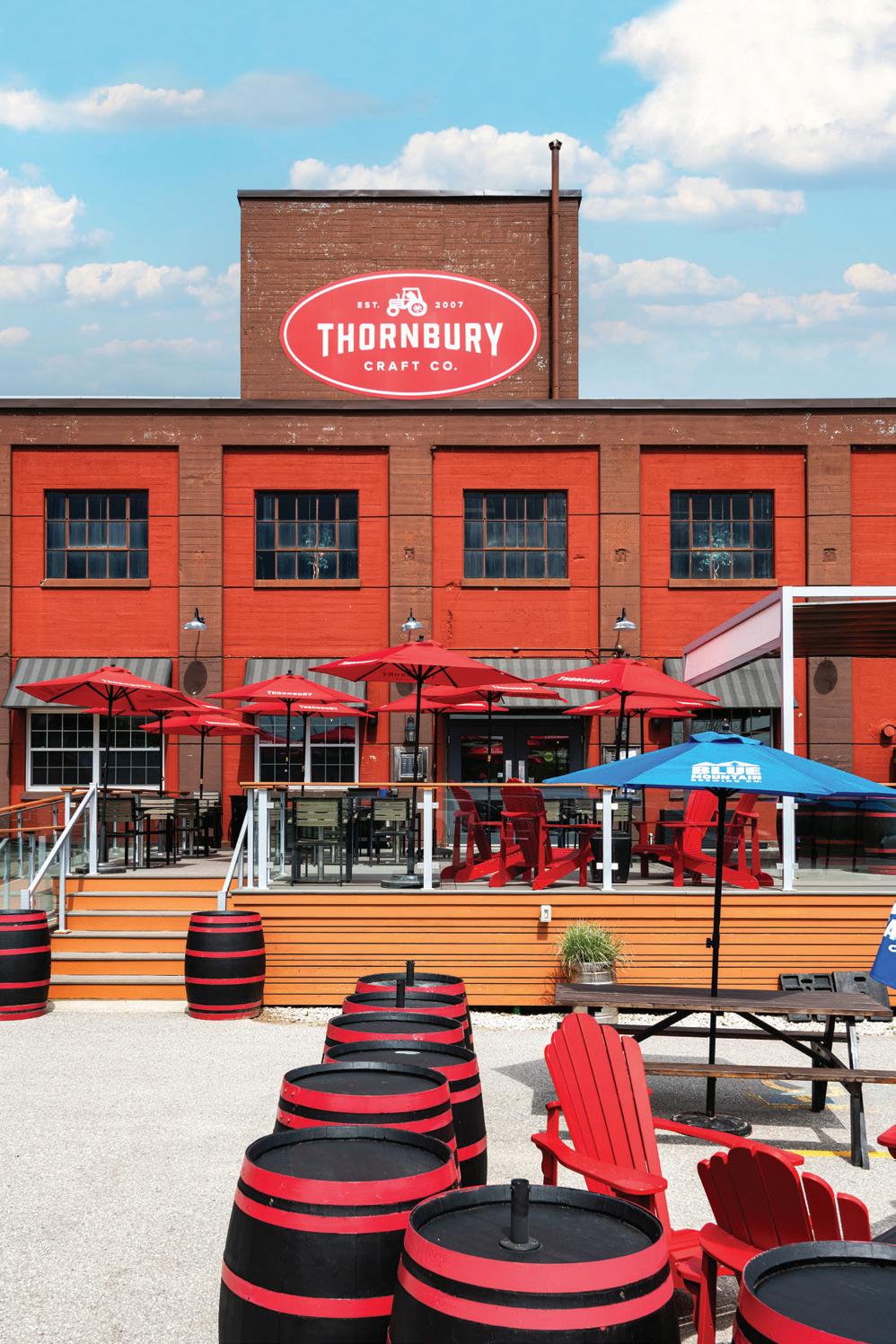


Thornbury Craft Co. stands at the forefront of cider excellence. We craft our ciders in small batches, from locally sourced, fresh-pressed apples, in the heart of apple country.
CHECK OUT OUR:
PATIO
LIVE MUSIC

• TOURS AND MORE

Monterra Golf celebrates summer with top-tier tournaments, impeccable turf, and an unbeatable atmosphere.
By Cara Williams | Photography by Clay Dolan

Celebrating over three decades at Blue Mountain Resort, Monterra Golf strikes a rare balance between pristine natural beauty and exceptional playability. Known for gently rolling hills, impeccably maintained fairways, and panoramic views stretching from Georgian Bay to the top of the Escarpment, Monterra remains a local favourite, attracting both seasoned golfers and enthusiastic newcomers as summer swings into full gear. Ryan Jackson, Manager and Head Golf Professional, spotlights Monterra’s rising reputation as a hub for premier golf events. “We’re hosting the RBC Scramble qualifiers for the second consecutive year on July 24th,” Ryan explains. “It’s quickly becoming a renowned event in Canadian golf. Participants compete locally, then regionally, aiming for a spot at the national finals held at Cabot Cliffs in Cape Breton.” This event has rapidly established itself as a must-attend, drawing players eager for competitive spirit and community camaraderie. Returning this summer is the prestigious North American Cup, bringing together exceptional junior talent. “It’s the top 16 junior golfers from various Canadian tours competing against the top 16 American juniors,” says Ryan. Monterra’s successful hosting two years ago secured its selection once more—testament to the course’s superior quality and unmatched hospitality.

“It’s a four-day tournament and the families stay right here at Blue Mountain,” Ryan continues. “Everyone loves the resort atmosphere. We receive countless compliments about the course and the way the tournament is run.”
But Monterra’s charm extends far beyond tournaments. Superintendent Ken Bird underscores the meticulous care and pride invested in every inch of the course. “We celebrated our 35th anniversary last season, and the feedback has been fantastic,”

ENJOY RESPONSIBLY, EH AVAILABLE AT THE

Ken notes. “The course conditions are consistently excellent, thanks to our outstanding turf maintenance team.”
What truly distinguishes Monterra is its unique landscape.
“Sitting at the base of Blue Mountain Resort, the terrain is naturally varied,” Ken describes. “We have rolling hills, expansive fairways, and a mix of dramatic views—either looking back at the Escarpment or out towards Georgian Bay. It’s a special place to play.”
Ryan echoes Ken’s sentiment, noting that it’s not just the views that attract golfers, but the exceptional course experience.
“I’ve been in golf for a long time, and our team here is beyond anything I’ve encountered before,” Ryan says proudly. “Our employee retention rate is around 99%, which is incredibly rare in the golf industry. That consistency means golfers see familiar, friendly faces year after year.”
Ken and Ryan both credit Monterra’s standout success to their passionate, dedicated staff. “Our maintenance crew is second to none,” Ken says. “They genuinely love what they do, and it shows in every detail on the course.”
The vibrant social atmosphere of Monterra and Blue Mountain Resort further elevates every golfing experience. Families accompanying golfers find abundant amenities and engaging activities, ensuring each tournament or casual round is memorable.
As Monterra dives into another round, visitors can anticipate impeccable greens, thrilling events, and an inviting community spirit. Whether you’re playing for stakes or pleasure, Monterra Golf at Blue promises an unforgettable adventure on and off the fairways. E
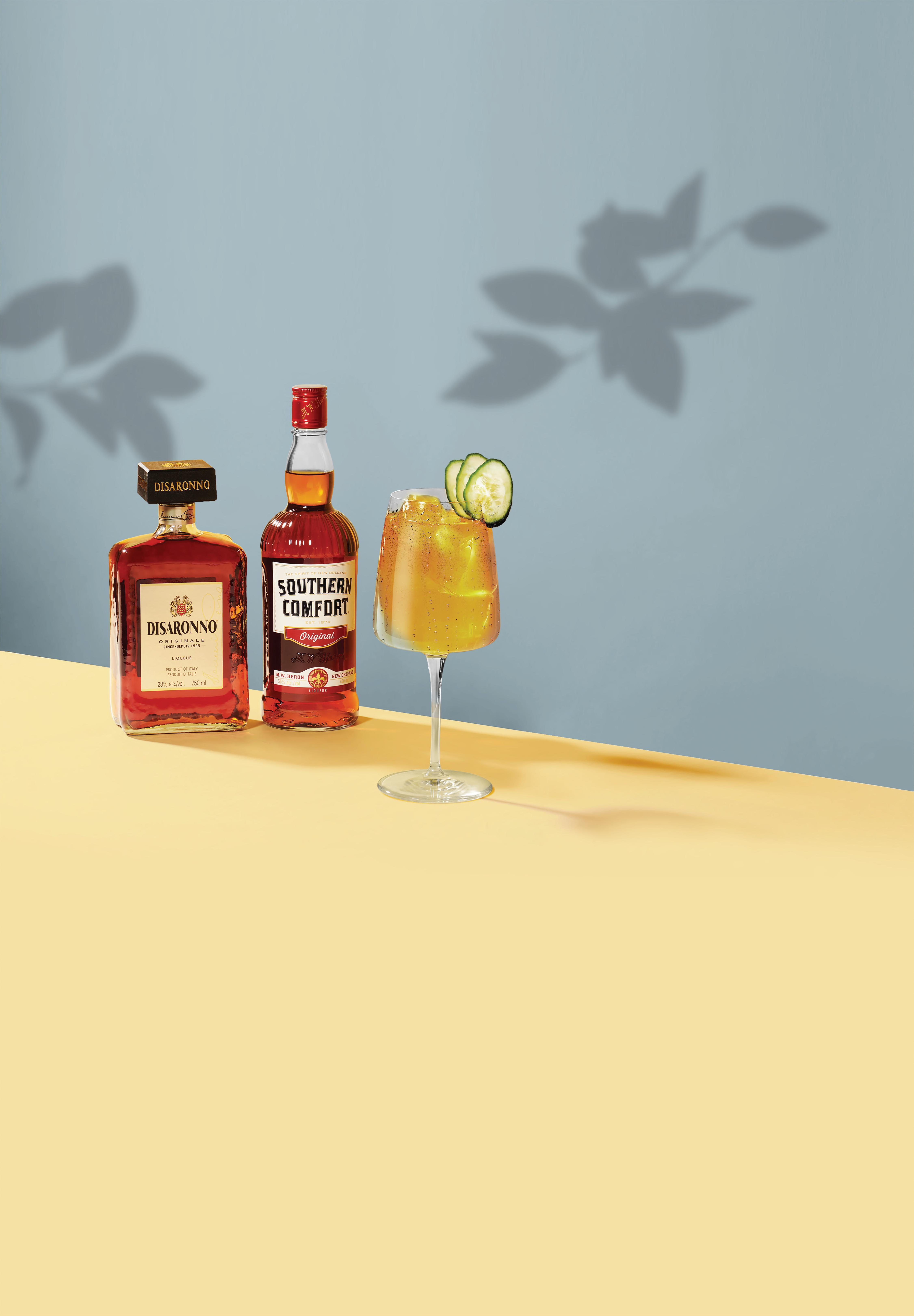



The Annual BIG Sale Customer Appreciation Event at Quaintrelle Friday, September 5 | 5PM – 9PM
Get ready for an unforgettable night of beauty, savings, and celebration!
Join us for an evening of: Live Music • Delicious Drinks & Bites • One-Night-Only Deals on Packages Exclusive Giveaways & Surprises
Whether you’re a longtime client or new to Quaintrelle, this is your chance to stock up on your favourite treatments—at unbeatable prices.
Bring a friend and enjoy: VIP package pricing • First access to new treatments • A fun and fabulous atmosphere to kick off your fall glow-up
Quaintrelle Medical Aesthetics Call (226) 898-6612 to get on the Guest List. Be there.
Two Breakthrough Treatments. One Beautiful You.



Say goodbye to tattoos, acne scars, pigmentation, and dull skin. The world’s first picosecond aesthetic laser is here—delivering lightning-fast bursts of energy to target unwanted pigment, boost collagen, and leave your skin looking smoother, brighter, and younger. It even removes tattoos with unmatched precision.
• 1,000x faster than traditional lasers
• Smooths fine lines and scars
• Safe, effective, and non-invasive

Tighten, tone, and transform your skin—without surgery. Potenza combines microneedling and radiofrequency to rejuvenate all skin types and tones, all year round. Minimal downtime. Maximum glow.
• Tightens and firms skin
• Shrinks pores and evens tone

• Reduces fine lines, wrinkles & scars
• Treats face & body—customized to you





Desiree has a background in communications and education and now works at Water First, a non-profit focused on local water challenges in Indigenous communities. A proud member of Curve Lake First Nation, she’s passionate about meaningful work that blends impact, storytelling, and Indigenous perspectives. These days, she’s soaking up life in Wasaga Beach with her partner and toddler son—enjoying the slower pace whenever she can.


Michelle FitzPatrick
A self-described lover of life, Michelle embraces everything from fashion and fitness to travel and time with friends. Whether she’s exploring new destinations, spending time with loved ones, or walking her two dogs—Oliver and Murphy—her vibrant spirit shines through. For Michelle, great style is simply part of living well.


An artist at heart, Amber swapped the bustle of city life for the natural rhythm of Collingwood. Since the move, she’s immersed herself in rock climbing and swimming, drawing inspiration from the landscape around her. The slower pace and deepened connection to nature have sparked a creative renewal, infusing her work with fresh perspective and energy.













Our Live Well At Home program helps older adults with aging in place. Through our drop-off services and providing community connections, specially trained volunteers assist older adults to access resources and provide companionship needed to enhance their quality of life, allowing them to remain in the comfort of their homes for longer.
Please contact Bruce Peninsula Hospice for more information, we are only a call away!
www.bphospice.ca (519) 534-1260 ext. 5612
clients from Tobermory, Lion’s Head, Wiarton, Sauble Beach and surrounding areas

Personalized Medical Programs Include
• In-person and
• Comprehensive l
We o er all hormones including HCG, DHEA & Human












atigue, or low energy, is a common symptom that leads people to consult with a naturopathic doctor (ND). We can order blood tests to rule out causes such as hypothyroidism, insulin resistance, and low iron or B12. If these tests are all normal, then low energy is most often associated with daily habits. Here are a few we consider:

Sleep is foundational to physical and mental stamina. Too often, people don’t prioritise good sleep—staying up late, using screens before bed, eating late, or consuming alcohol. If you snore, you need to rule out sleep apnea—discuss this with your healthcare provider. Sleep quality is critical to address if you want to see changes in daytime energy.
Dr. Shelby Worts, BSc, ND
Exercise can be a double-edged sword. While regular movement supports better energy, fatigue can make it hard to get started. Overtraining, on the other hand, can also contribute— especially if your nutritional needs aren’t being met.
Nutrition matters. Low-nutrient foods aren’t the answer. A quick pick-me-up bar or beverage may help you push through temporarily, but only nutrient-dense meals and snacks will truly support sustainable energy. Keep it simple: aim for produce and protein at each meal. That could be a big salad with chicken or fish—or even half a red pepper and a hard-boiled egg. It’s better than most bars or skipping the meal entirely.
Hydration may seem minor, but it can have a big impact on how you feel. Prioritise plain water and herbal teas. On hot days or during sweaty activities, add electrolytes.
Stress affects both mental and physical energy. Reducing stressors where possible, engaging in stress management techniques, and supporting your ability to adapt and recover are all essential. Stress management looks different for everyone and may include meditation, yoga, exercise, time in nature, or mindful breathing.
Caffeine is a short-term fix. While it gives a temporary boost, it can come at the expense of future energy due to its impact on the adrenal (stress) glands. If you rely on coffee, try limiting your intake to one serving per day.
Alcohol can interfere with sleep—and therefore, your daytime energy—even in small amounts.
But what about when you know what to do, and you’re just too tired to start? This is where I love intravenous (IV) nutrient therapy. After a couple of weekly treatments, people often feel ready to go for that walk, make the better meal, engage in social activities, and more—the habits that ultimately contribute to long-term, sustained energy.
To explore your low energy and receive a personalised plan addressing all the factors above, speak to your naturopathic doctor. E
A GP dermatologist’s guide to protecting your skin from sun damage, cancer risk, and common sunscreen mistakes—in time for summer.
You can usually spot the dermatologist at the beach: they’re the ones in a long-sleeve “rasher” swim shirt, a wide-brimmed hat, with a thick layer of zinc on their nose and a telltale sheen from a copious application of SPF sunscreen. Why so cautious? Two reasons: skin aging and skin cancer. About 95% of the sun’s rays are UVA, which penetrate through the full thickness of the skin— both the epidermis and dermis. UVA exposure leads to sun damage such as solar freckles, loss of elasticity, visible blood vessels, fine lines and wrinkles—damage to skin DNA that can lead to unregulated cell growth otherwise known as skin cancer. The other 5% of UV radiation comes from UVB, which is mainly responsible for tanning. But don’t be fooled: tanning is just your skin’s response to damage. It provides only about an SPF 10–15—nowhere near enough to prevent further harm, and it contributes to premature aging. An SPF 30 is considered the minimum for broad-spectrum protection. Some trusted brands include AlumierMD™, ZO® Skin Health, ALASTIN Skincare®,
By Dr. Wade Mitchell, Medical Director, Quaintrelle Medical in Collingwood

Vivier®, and EltaMD®.
Concerns have been raised recently about chemical sunscreens being absorbed into the bloodstream at levels exceeding U.S. FDA guidelines. However, these findings occurred only under “maximal use” conditions—applying sunscreen to the entire body, four times a day for four days straight. No adverse health outcomes were observed, and the concern applies only to specific ingredients (oxybenzone, avobenzone, octocrylene, and ecamsule). The potential for hormone-disrupting (anti-androgen) effects remains unproven and does not apply to physical (mineral-based) sunscreens like zinc oxide and titanium dioxide. Mineral sunscreens, which sit on the skin’s surface rather than being absorbed, offer roughly eight hours of protection when applied properly (about a shot glass worth for the full body). They are especially effective against UVA rays. In contrast, aerosolized sunscreens often fail to provide consistent coverage, are easily blown away, and may be inhaled—raising concerns about









unknown respiratory effects. They are also flammable, with rare but documented cases of combustion when near open flames.
Protective clothing is another smart strategy. Rash guards or swim shirts offer excellent coverage, with a UPF (ultraviolet protection factor) of about 50—the darker and dryer, the better. A wide-brimmed hat can protect the ears and face, while seeking shade over sunbathing helps minimize both sun damage and cancer risk.
For those seeking additional support, supplements like Polypodium leucotomos extract (a fern native to Central America) and nicotinamide (a form of vitamin B3) may reduce sun damage. Some evidence suggests nicotinamide can lower the risk of precancers and nonmelanoma skin cancers over 12 months, although the data remains of low quality.
The bottom line? Be vigilant. Sun protection isn’t just for the beach. Apply SPF daily to all exposed skin and reapply regularly—every single day of the year. It’s also wise to book an annual skin cancer screening if you are at higher risk. At Quaintrelle Medical, advanced Mole Mapping with Foto Finder technology offers a thorough way to track changes over time. Embrace your inner dermatologist. It’s a simple step that can help preserve your skin’s health and appearance for years to come. E



Carey’s favourite SPF is Vivier® Sheer SPF 30 Mineral Tinted sunscreen. This lightweight, breathable formula offers broad-spectrum UV protection with a sheer tint that helps even out skin tone. Its nourishing ingredients hydrate while delivering optimal sun protection, making it a great option for daily use across various skin types.
Kassidy’s favourite SPF is Alastin® HydraTint Pro Mineral Broad Spectrum Sunscreen SPF 36. This tinted sunscreen provides light coverage and a healthy glow, making it a popular base for everyday cosmetic routines. Kassidy loves how it evens out skin tone and gives a radiant finish—even on make-upfree days.
Dr. Mitchell’s favourite SPF is Vivier® Sheer SPF 45. This physical sunscreen uses zinc oxide and titanium dioxide to block UVA rays, which account for 95% of the sun’s rays that penetrate the skin—leading to premature aging and potential cellular damage. Vivier® Sheer SPF 45 offers up to eight hours of protection (as long as the skin remains dry), while its silky matte finish helps lock in moisture and guard against daily environmental stressors.











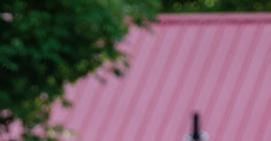









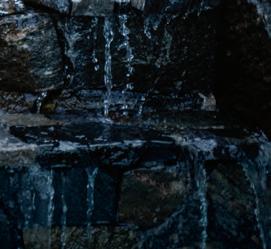


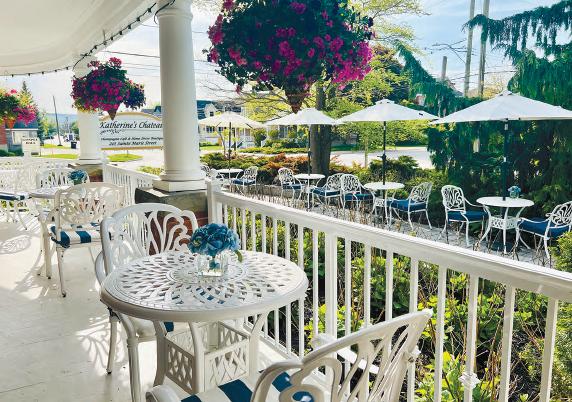


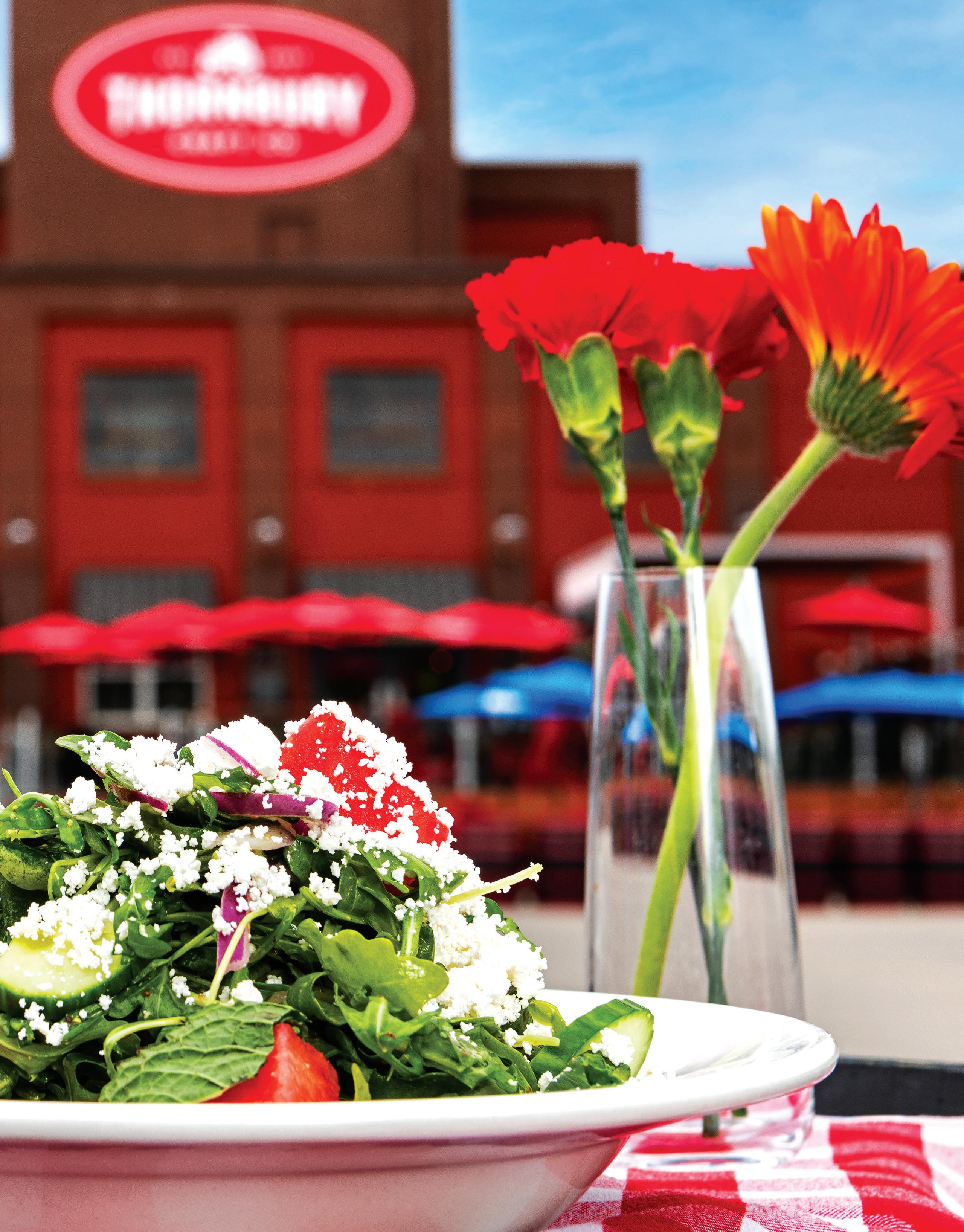
Tucked inside a 1930s-era apple storage building, Thornbury Craft Co. offers a warm, easygoing atmosphere with light industrial charm and a dash of local heritage. This summer marks the one-year anniversary of their new kitchen, an addition that has elevated the experience to match the quality of their award-winning ciders, seltzers, and the newly launched Blue Mountain Brewing Co. beer lineup.
With 12 dedicated beer taps now complementing their cider and seltzer offerings, Chef Kennedy Deneau has crafted a seasonal menu that elevates the entire Thornbury Craft Co. experience. Whether you’re enjoying lunch on the patio or unwinding in the reimagined taproom, you’re invited to linger, sip slowly, and savour each bite.
Here, Chef Kennedy shares three of her summer favourites—fresh, vibrant, and perfectly paired with a craft beer.

“Fresh, bright, and light, this salad is perfect for a warm summer day—especially if you’re dining al fresco.” Serves 2
INGREDIENTS:
4–5 cubes fresh watermelon
4 mint sprigs
arugula, handful
4 lemons
2 tbsp Dijon mustard
1 cup canola oil
pinch salt
pinch pepper
4 tbsp thyme
4 garlic cloves, diced
1 red onion, sliced
½ cucumber, sliced small block of feta cheese
INSTRUCTIONS:
1. Cut lemons in half and squeeze juice into a small bowl.
2. Add garlic, thyme, mustard, salt, and pepper.
3. Whisk in oil until thickened to preference.
4. Dice watermelon and place in a large bowl.
5. Add arugula, onion, cucumber, mint, and dressing. Toss gently.
6. Plate and crumble feta on top.
BEER PAIRING:
Blue Mountain Light Lager
Easy-drinking and crisp with a soft malt aroma and light floral hop note. The lower alcohol content and minimal bitterness let the salad’s fresh flavours shine.




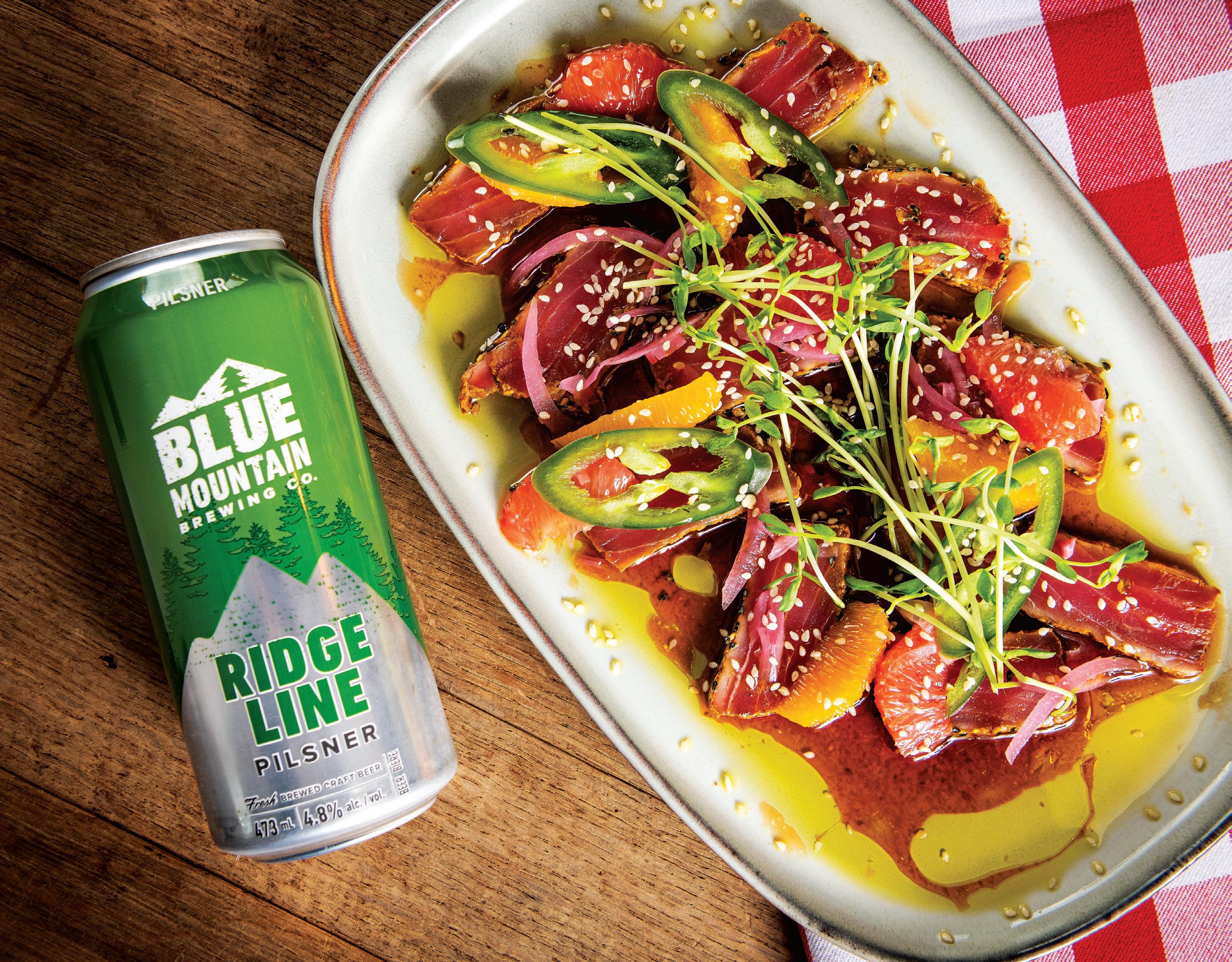
Seared Tuna Tataki
“One of my favourite dishes on the summer menu—vibrant, rich, and beautifully balanced.” Serves 3-6
INGREDIENTS:
1 block fresh tuna
¼ cup pickled red onions
1 jalapeño
1 orange
1 grapefruit
3 tbsp ponzu sauce (see below for optional homemade recipe)
1 cup turmeric
3 tbsp white sesame seeds
3 tbsp black sesame seeds
1 tbsp ground ginger
pinch salt
pinch pepper
INSTRUCTIONS:
1. In a bowl, combine turmeric, ginger, garlic powder (optional), sesame seeds, salt, and pepper to make a rub.
2. Coat the tuna block on the top, bottom, and long sides—leave short ends bare.
3. Heat a cast-iron pan until smoking. Sear tuna 2–3 minutes per side. Chill to stop cooking.
4. Thinly slice jalapeño, orange, and grapefruit. Set aside.
5. Slice tuna into thin strips and arrange over a base of ponzu sauce.
6. Top with citrus, jalapeño, and pickled red onions.
Optional Homemade Ponzu Sauce:
INGREDIENTS:
2 tbsp mirin
1 strip kombu (kelp)
2 tbsp rice vinegar
½ cup katsuobushi (bonito flakes)
½ cup soy sauce (or tamari)
½ cup mixed citrus juice
INSTRUCTIONS:
1. Combine all ingredients in a jar.
2. Let sit overnight in fridge.
3. Strain and discard solids.
BEER PAIRING:
Blue Mountain Brewing Co. Ridgeline Pilsner
A two-time World’s Best Pilsner award winner, this Czech-style brew delivers a crisp, clean balance of malt sweetness and hop bitterness—perfect with tuna and citrus.








“An easy but elegant dessert to cool down a summer evening.” Serves 4
INGREDIENTS:
4 pears
1 can Thornbury Spiced Apple Cider
1 cinnamon stick
1 cup sugar
1 L water
1 lemon
1 vanilla bean
2–3 whole star anise
6 slices ginger
INSTRUCTIONS:
1. Split vanilla bean and slice lemon.
2. Peel, core, and quarter pears.
3. In a large saucepan, combine water and sugar. Heat until sugar dissolves.
4. Add pears and remaining ingredients. Poach over medium heat for 8–10 minutes.
5. Remove pears and place on a tray in the fridge to stop cooking.
6. Reduce half of the poaching liquid. Add 2 cubes of butter to thicken into a sauce.
7. Plate pears with a scoop of vanilla ice cream in the centre. Drizzle with sauce and garnish with mint.
BEER PAIRING:
Blue Mountain Brewing Co. Belgian Witbier
This summer seasonal is bursting with orange zest, coriander, and chamomile. Creamy and citrus-forward, it complements the pears’ spice and the ice cream’s sweetness beautifully. E
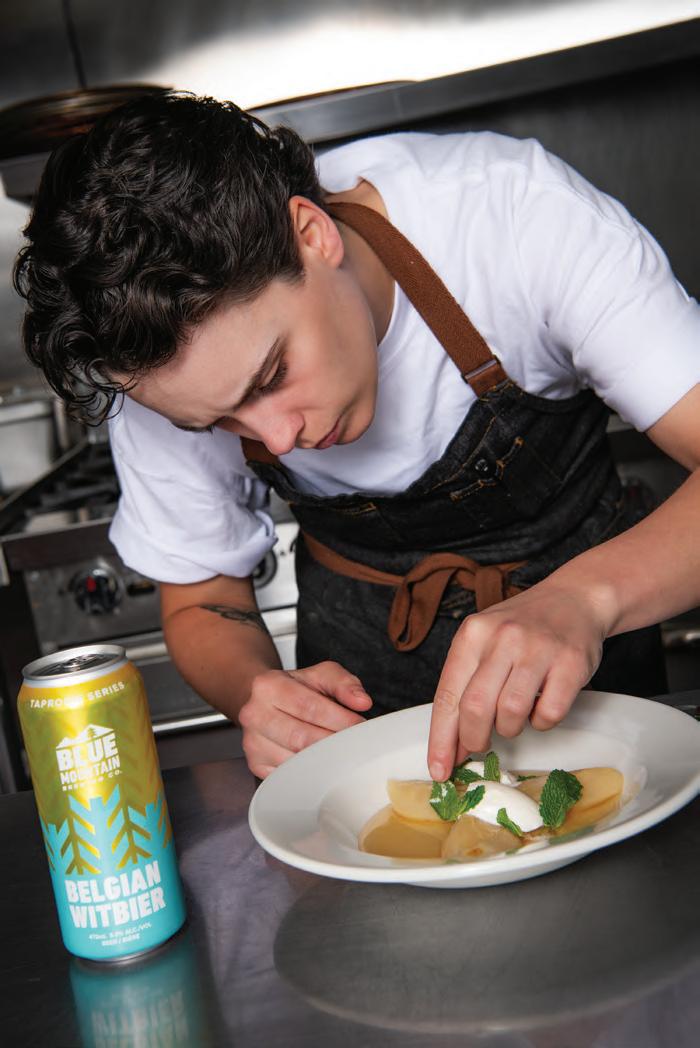



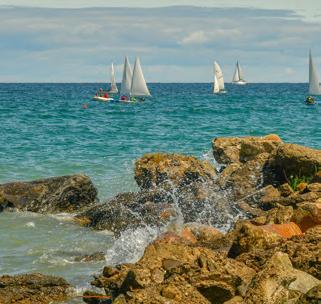



























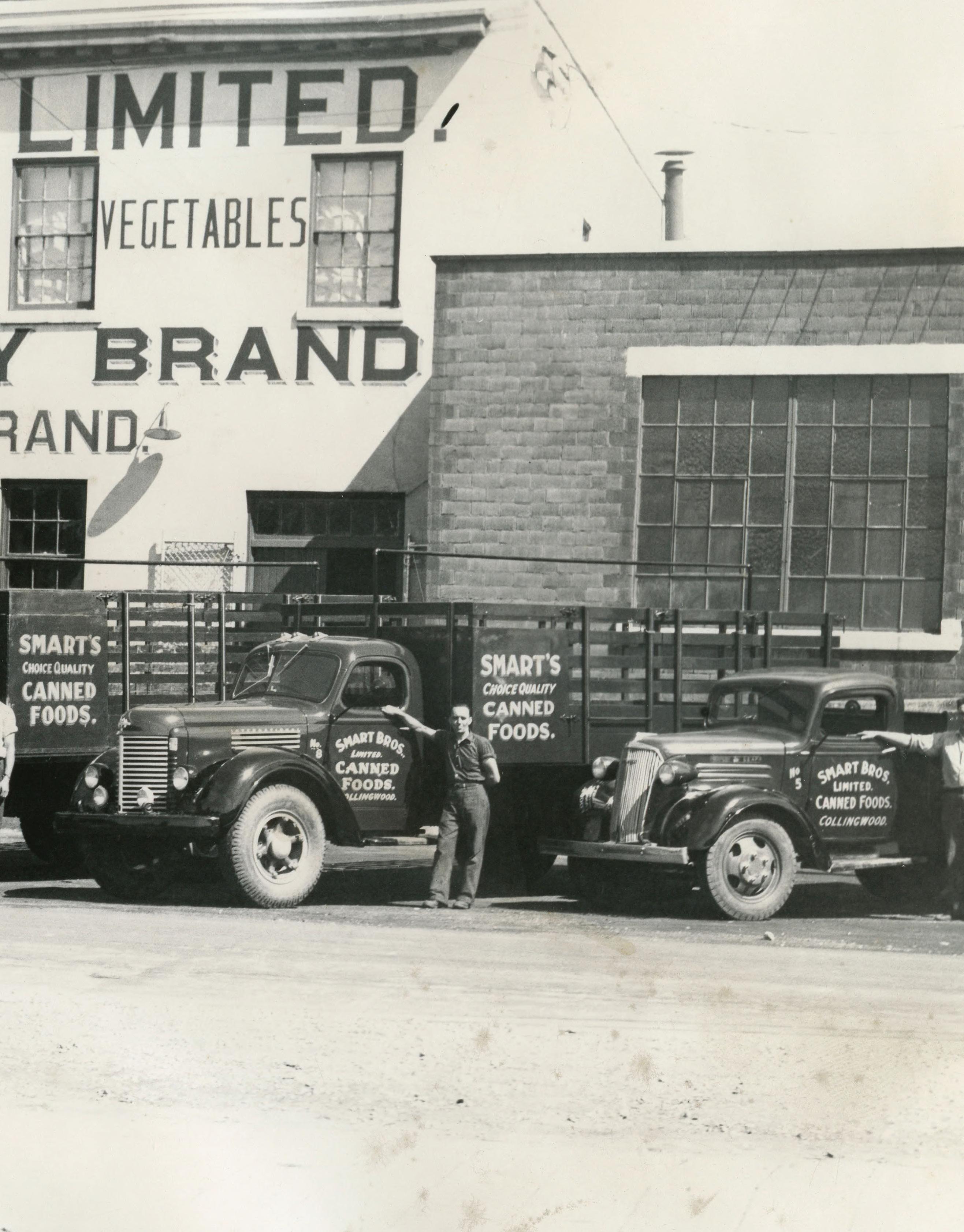
In the heart of wartime Collingwood, a young woman’s unexpected job interview marked the start of a remarkable journey—for her, and for the legacy of the Smart Brothers, whose pioneering spirit and community roots shaped the town for generations.
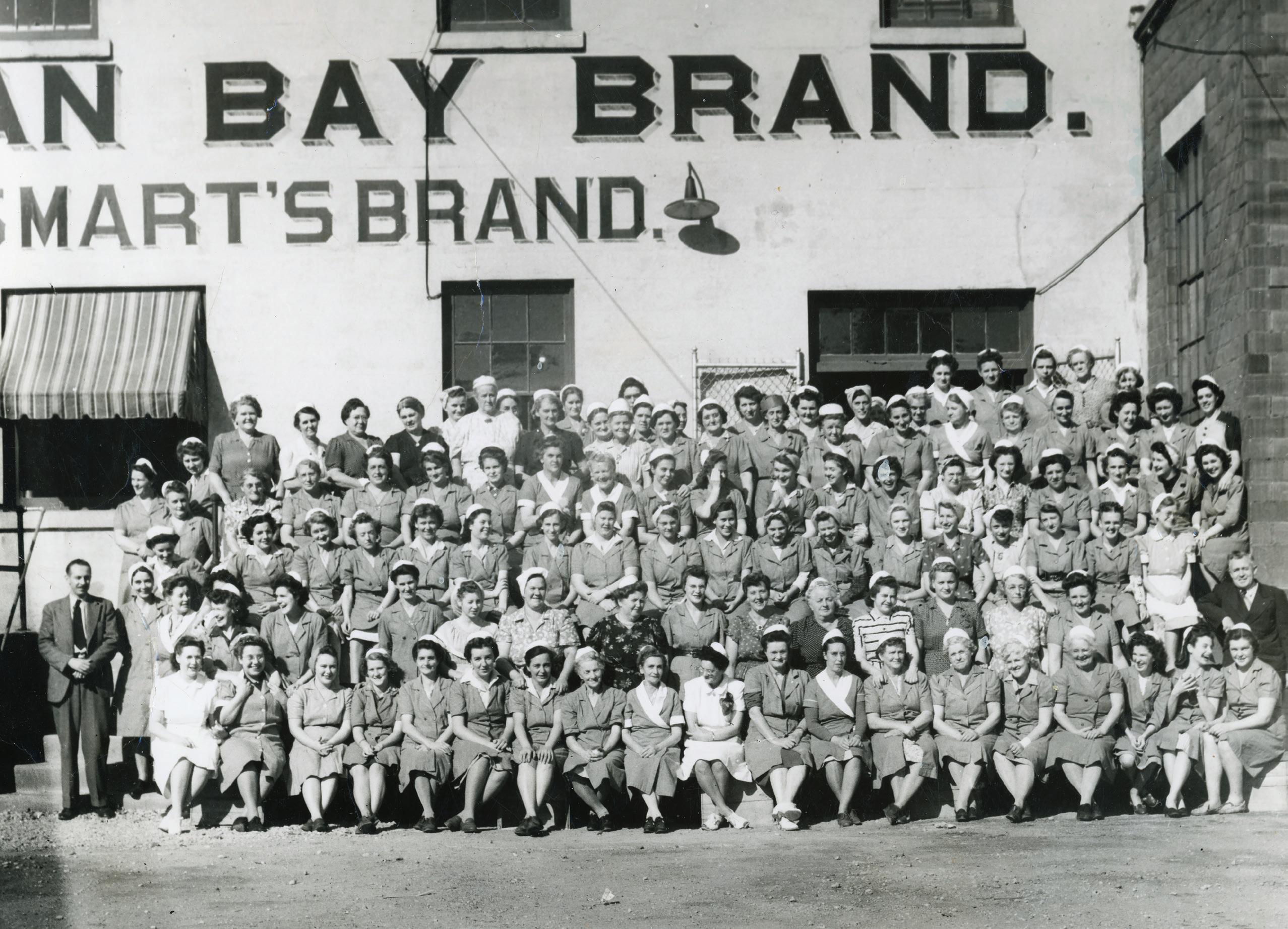
“Good morning, Miss Kelly?” Startled, the young woman hastily put her compact mirror back into her purse. She wouldn’t have time for a final glance before going in—her interviewer, it seemed, had come out to meet her. The well-dressed man wore a sharp suit and a big smile. As he extended his hand, he said, “I’m John Smart. Welcome.” Eleanor took his offered hand and was about to thank him for the opportunity to apply for a job. Like many young women, she had left her home in Mulmur to find work here in Collingwood. She had heard that Smart’s Cannery was always hiring. But before she could even begin, the man before her asked a question: “Do you have your driver’s licence?” The whole thing being so surreal, Eleanor responded by instinct. “Why?” she asked in turn. “Do I need one to walk through this place?” With a big laugh and a smile, Mr. Smart told her they were looking for a woman to become their first delivery driver for their flower business—and he thought she might just be the one they had been looking for. The truth was, Eleanor had not in fact driven before this, but she jumped at the opportunity. Women delivery drivers were so rare as to be almost unheard of.
In short order she was fitted for a Smart’s green uniform, complete with jacket and cap, and shown to her new truck with the Smart’s logo crisply painted on the side. And in no time at all, as her deliveries took her to all corners of the area, Miss Kelly (later known as Mrs. Eleanor Sproule) would be instantly recognized and well-loved by all the people she would meet each day. And as she herself would later say, “It sure beat standing up to your elbows in tomatoes!” (Enterprise-Bulletin, Nov. 14, 2008).
This life-changing day for young Eleanor took place in 1942, in the height of wartime when most able-bodied men were away on overseas service. Eleanor’s popularity with the customers—not just because of the novelty, but also because of her congeniality and exemplary service—would go on to open other driver jobs for women in Collingwood. But her daily deliveries would also serve as a visible reminder of the community-minded hiring practices of a local business. A business that was a pillar of Collingwood for 80 years. A business that routinely went out on a limb to employ, what seemed like, at least one member of nearly every Collingwood family at some point or other... men, women, even students and children.


Living in the Georgian Bay area, we’re privileged to have nature’s playground right outside our doors.
Whether you’re out exploring or just enjoying the views, you can rely on Darryn, Andrew, and the team at Stroud & Scott Wealth Management to keep your wealth plan on track so you can make the most of the outdoors all year long.
Stroud & Scott Wealth Management is a proud member of the Collingwood, Thornbury, and Blue Mountain communities. We provide custom wealth solutions for families and business owners to help you build your net worth, be tax efficient, protect what matters, and build your legacy.
40 Huron Street, Suite 201 Collingwood, Ontario L9Y 1C5


Andrew Scott Investment Advisor T: 705-444-1524 andrew.scott@td.com
Jeanine Rayner
Client Relationship Associate T: 705-444-5828
jeanine.rayner@td.com
Darryn Stroud, CIM® Senior Portfolio Manager T: 705-444-1904
darryn.stroud@td.com
Natasha McEachern
Client Service Associate T: 705-444-1337 natasha.mceachern@td.com
Sarah Pryce
Client Service Associate T: 705-444-6902
sarah.pryce@td.com

And it all began with a man named John Smart, who emigrated to Canada from Dorsetshire, England, in 1846. Eventually John and his wife Isabella would find their way up to Collingwood on the recently completed railway. He worked as a conductor for the Northern Railway until poor health caused him to retire. So, what does one do when they find themselves too sick to work anymore? Why, buy a farm, of course, and begin a market garden!
In 1890, John purchased seven acres of land on Campbell Street, which at the time was considered to be way out in the country. In short order he added another five acres across the street. This would set a pattern for the great success he would see over the coming years.
At first John would be helped by one of his sons, Norman, and after a couple of years another son, George (who went by W.G.), came on board and the father was finally able to retire. Together, Norman and W.G. decided to call the business Smart Brothers Limited. Eventually, two of W.G.’s sons, John and Edward, would continue on the “brother” part of the Smart Brothers operations.
From seven to 12 to 60 acres in short order. Within twenty years, Smart Brothers had acquired 200 acres of land with sections for fruit, vegetables, and flowers. At their peak they would own around 500 acres of local farmland. The operation became so expansive that manure had to be imported from Toronto to help fertilize all their fields—cherries, plums, apples,
tomatoes, strawberries, raspberries, asparagus, onions, beets, carrots, lettuce, radishes, cabbage, parsnips, cucumbers, corn, and celery. Many were quick to tell them there would be no demand for their crops. They firmly believed that if they could grow it, a market would be there. And they were right.
In those early days, Collingwood was a busy port so most of the produce was shipped out five times a week in season by packet steamer to all parts of the North Shore of Georgian Bay. Sauerkraut and cabbage were the most popular at the time.
As Tracy Marsh recorded in the Enterprise-Bulletin, in a brisk business cabbage went for $2.25 for a 150 lb. crate. The rest went into making some 20,000 cases of sauerkraut a year. The demand was so large that the sauerkraut was fermented in vats six to eight feet across and ten feet deep.
Part of Smart Brothers’ success was their continued innovation and never-ending search for opportunities. W.G. took special care to reclaim much of this area’s swampland. He turned it into productive fields through expert tile drainage, all of which he did by hand. He was seen, even into his 80s, showing others how to continue the important work. His son John was a noted chemist, particularly ahead of the curve in understanding the need for trace elements and soil amendments to get the best growth. While he was not officially a student, he did spend much time studying chemistry at the Ontario College of Agriculture in Guelph.
Knowing that bees were vital to their many crops, Smart Brothers took up beekeeping and sold honey on the side. Seeing










Proudly located in one of Collingwood’s most sought-after neighbourhoods, Victoria Annex is coming to life. Construction is underway at 400 Maple Street, where a transformed 19th-century schoolhouse and an inspired new coach house are nestled among luxury single and semi-detached homes that pay homage to Collingwood’s rich history and charm. Limited to just nineteen homes and steps from the downtown core, a remarkable lifestyle awaits.
that birds were very effective at keeping down the insect problem, they built houses to encourage purple martins to come back year after year. Not wanting their many greenhouses to be empty in between vegetable seasons, they took to planting flowers between other crops. This in turn opened up further opportunities, as Christine Cowley records in her book Butchers, Bakers, and Building the Lakers: at Christmas, Easter, and on Mother’s Day, Henry Smart (a brother to Norman and W.G., who ran a very successful tailor shop here in town) would pack up his suit samples and sell seasonal flowers from the farm. Over time this would turn into a full-blown flower shop in the same spot.
Edward Smart introduced a dietetic line of products and under his leadership Smart Brothers was the first company in Canada to provide a calorie-reduced line of canned products. This was no small feat considering their very popular line of jams contained three times as much sugar as fruit!
As early as 1911, Smart Brothers set up their very own canning factory on the farm, generating 70,000 cases of produce annually. In those early years every single can had to be hand soldered. It wouldn’t be until 1927 (and in the new canning factory) that a can closing machine would finally be added. Eventually the shipping of fresh produce on the lake-bound boats was replaced by the shipping of canned goods in a fleet of trucks.
The brand-new canning factory, built on the north side of First Street in 1925, would be large enough to produce some 325,000 cases of product a year. In its heyday, this canning factory had a record 331 employees with another 150 working on the farmlands. To service the growing fleet of trucks and
equipment, a garage and machine shop was built across the street from the canning factory. There were twelve more employees working there and in the Floral Division (like Eleanor Kelly).
Smart Brothers canned goods were shipped from coast to coast, and later even as far away as West Germany and Great Britain. The trucks drove from Collingwood to Montreal two times a week. Canned goods went down and loads of sugar came back home. At the height of their production, Smart Brothers had over 120 different products they sold worldwide.
It is little wonder, then, that at one time they were Ontario’s largest fruit and vegetable farming operation. Especially during the Depression-era, Smart Brothers was the single largest employer in Collingwood with wages that often equalled those in the shipyard. In fact, during the Depression the shipyard would lay dormant for significant periods. Yet even in those lean times, Smart Brothers still hired hundreds of employees. Not only did they hire men, women, students, and even local children, many local farmers sold produce to them. During harvest season, local farmers would bring tractors and trailers and they would be lined up all the way down Pine Street as they waited to be weighed and inspected at the canning factory, turning today’s fresh produce into tomorrow’s canned goods. “Packed at Flavour Peak,” as the Smart Brothers logo said.
But beyond simply providing work for so many in the area, Smart Brothers gave back to the community in so many other ways. The roof of the cannery was the place to watch the launch of the ships. And employees were always welcome to take a break and invite their families to the spectacle. As the business



continued to buy up farmland, they also acquired a number of houses that went with them. These they turned into homes for their workers to live in.
At Christmas time, everyone at the factory received a free turkey. Donald Hurst recounted in a 1994 interview with the museum, and recorded in the local history files of the Collingwood Public Library, that dented and unlabeled cans were sold to the employees at a very significant discount. Sometimes this led to some funny stories in the Hurst’s kitchen, but it was a godsend, especially in the lean years of the Depression. Frank Simonato, in a similar interview, tells of how George Smart (W.G.) was always well-known for his kindness to employees. He once gave out a personal loan for one to buy a house, allowing it to be paid back out of the employee’s wages. Another time it is said W.G. paid five years’ worth of taxes for another man who was severely injured while serving as a firefighter. He was a devoted supporter of our hospital here in Collingwood, supplying the funding for much of the X-ray equipment used for many years. As well, Smart Brothers trucks were allowed to do hauling jobs for many local groups like the Boy Scouts. David Christie, in a further interview, recalls how John Smart served as chair of the Hospital Board. John was also instrumental in getting the Collingwood Ski Club started.
And the care the Smart’s business showed for this community and its people went even deeper still, for all their equipment was purchased locally whenever it could be. Their work uniforms were made by locals. All the painting, logo work, and auto body repairs for their fleet of trucks was sent to local businesses. Businesses like Dey’s Autobody, which first opened shop in 1871—not to service cars, but as a... well, that is a story for another day.
On this day, we are recalling the story of Smart Brothers, and all they did for our town. And sadly, just like the story of the Telfer Brothers Biscuit Company we covered in the very first episode of Season 3, this 80-year-old company would also end in a sudden and unexpected way. In 1964, after a number of family deaths left Edward the sole Smart brother left to run the company, Canada Vinegars purchased the business with the goal of expanding it even further. Now at this point, Edward had already turned down an offer from them earlier. But with the promise of doing even more for the people of Collingwood under the new business model, a deal was finally made. However, what no one knew at the time was that Canada Vinegars’ mother company in England ran into financial difficulties. Difficulties that led them to dissolve all foreign assets, leading to the sudden and surprising closing of Smart Brothers. By 1970 they were simply gone. Sold off for scrap and pieces, and no one here in town could say or do anything about it.
But gone does not mean forgotten, and if you know where to look, you can still see the legacy of Smart Brothers all over our town, even 55 years later. Some years ago, a boiler for the old greenhouses was found lying in a field near a newly built


subdivision just east of High Street. It was set up along the waterfront trails with a marker detailing Smart Brothers’ history. You can see them for yourself today right between the Labyrinth and our town’s Arboretum at the north end of Hickory Street.
The farm’s old apple storage building is now part of Campbell Lofts at 238 Campbell Street (formerly Smart’s Apartments), full of unique reminders of its long history. The Collingwood Nursing Home is on the approximate spot where the old greenhouses once stood. The building across the street on the corner of Campbell and High Streets, which now houses a number of community charities, first served as the Smart’s winter rhubarb house. The second canning factory stood where the LCBO now stands today. And the garage and machine shop was right where Loblaws now resides.
But above and beyond all these are reminders of the many lives that were touched by Smart Brothers. Youngsters who had their first jobs after school or over the summer, and the men and women who were given a chance to make a good living in the same town they grew up in. People who learned the value of hard work and giving back to the community that you live in. The very same people who have continued to do so even to this day. E



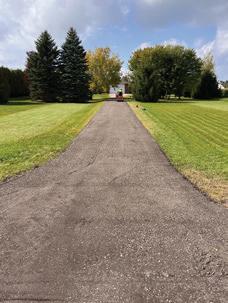






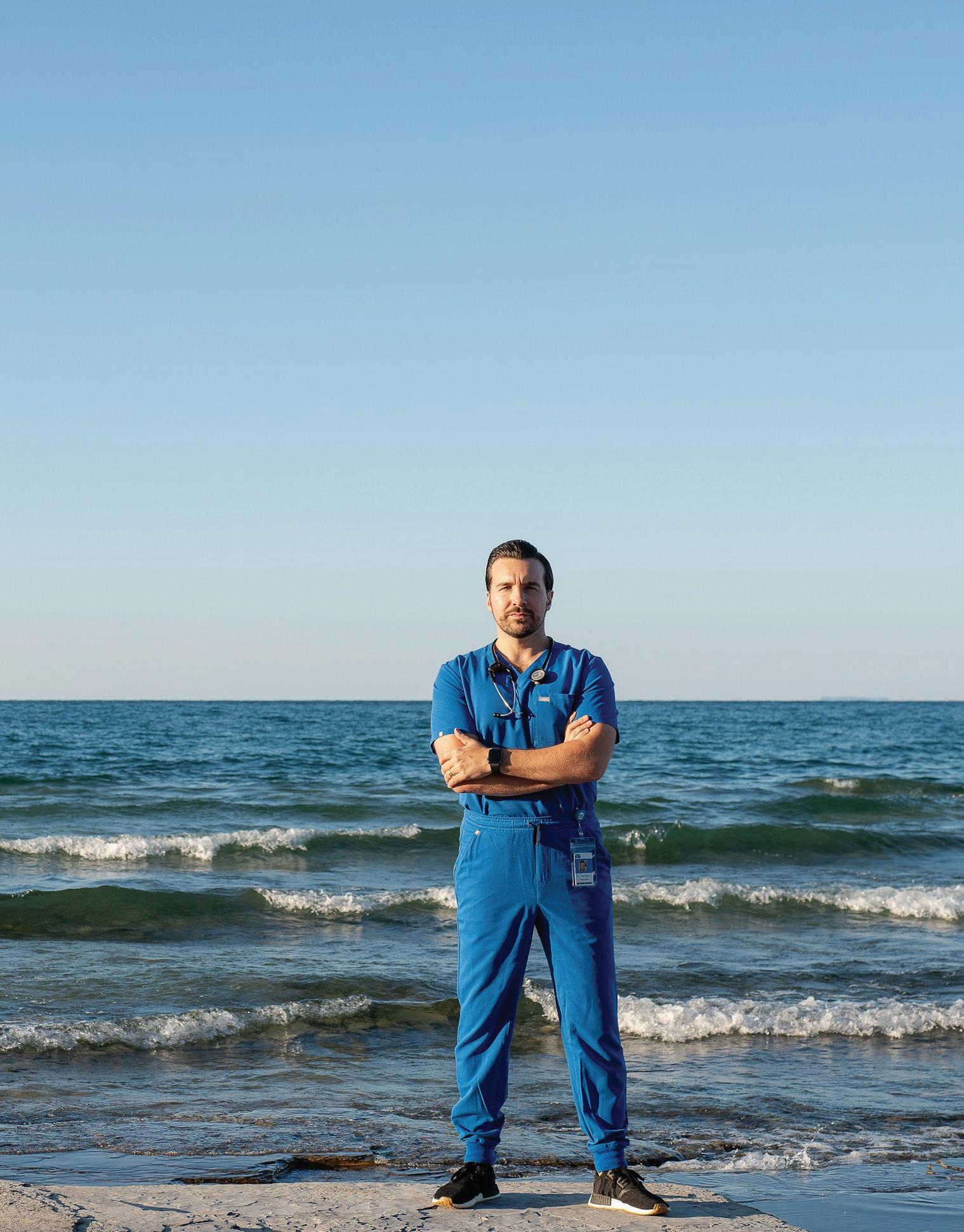
With construction set to begin in 2028, Collingwood General & Marine Hospital’s (CGMH) new hospital promises to elevate healthcare across South Georgian Bay for generations to come.
By Heather Fields, Communications Specialist, CGMH Foundation | Photography courtesy of CGMH
Apowerful transformation is underway in Southern Georgian Bay—one that promises to redefine healthcare for generations. After years of advocacy, planning, and community collaboration, the dream of a new, world-class hospital that this region needs and deserves is becoming a reality.

hospital, built in the 1950s, can no longer meet.
“Our community will lay the foundation not just for a physical structure, but for a thriving learning institution that will shape the workforce of tomorrow. The equipment, technologies, and innovations we integrate will elevate patient care and satisfaction, while instilling pride in having a hospital that serves us all. I’m excited to see how this new facility will amplify the incredible work already happening here every day.”
—Dr. Michael Lisi, CGMH Chief of Staff, A Day Away Podcast
With more than 74,000 permanent residents and 3.5 million annual visitors, this area is growing at an unprecedented pace. Collingwood’s population is expected to double over the next 20 years. The Blue Mountains is one of the fastest-growing communities in Canada, and Wasaga Beach has seen a 20% population increase in just five years. This rapid growth brings rising demand for healthcare services—demand our current
The existing CGMH building on Hume Street has served the region well, but it has long outgrown its capacity. Even so, our healthcare professionals continue to provide exceptional care— often under immense pressure.
“Don’t let the façade of this building scare you away. There are really exciting and wonderful things happening inside,” says Jory Pritchard-Kerr, President & CEO of the CGMH Foundation. “Most of all, there’s a deep sense of caring that will carry on into the new building. The sky’s the limit as far as what we’ll be able to achieve.”
To be built on Poplar Sideroad, the new CGMH facility will be four times the size of the current hospital. Construction is expected to begin in 2028. Until then, CGMH is working closely with patients, providers, and partners to design a space that is innovative, collaborative, and supports compassionate care.



Our community will lay the foundation not just for a physical structure, but for a thriving learning institution that will shape the workforce of tomorrow.”
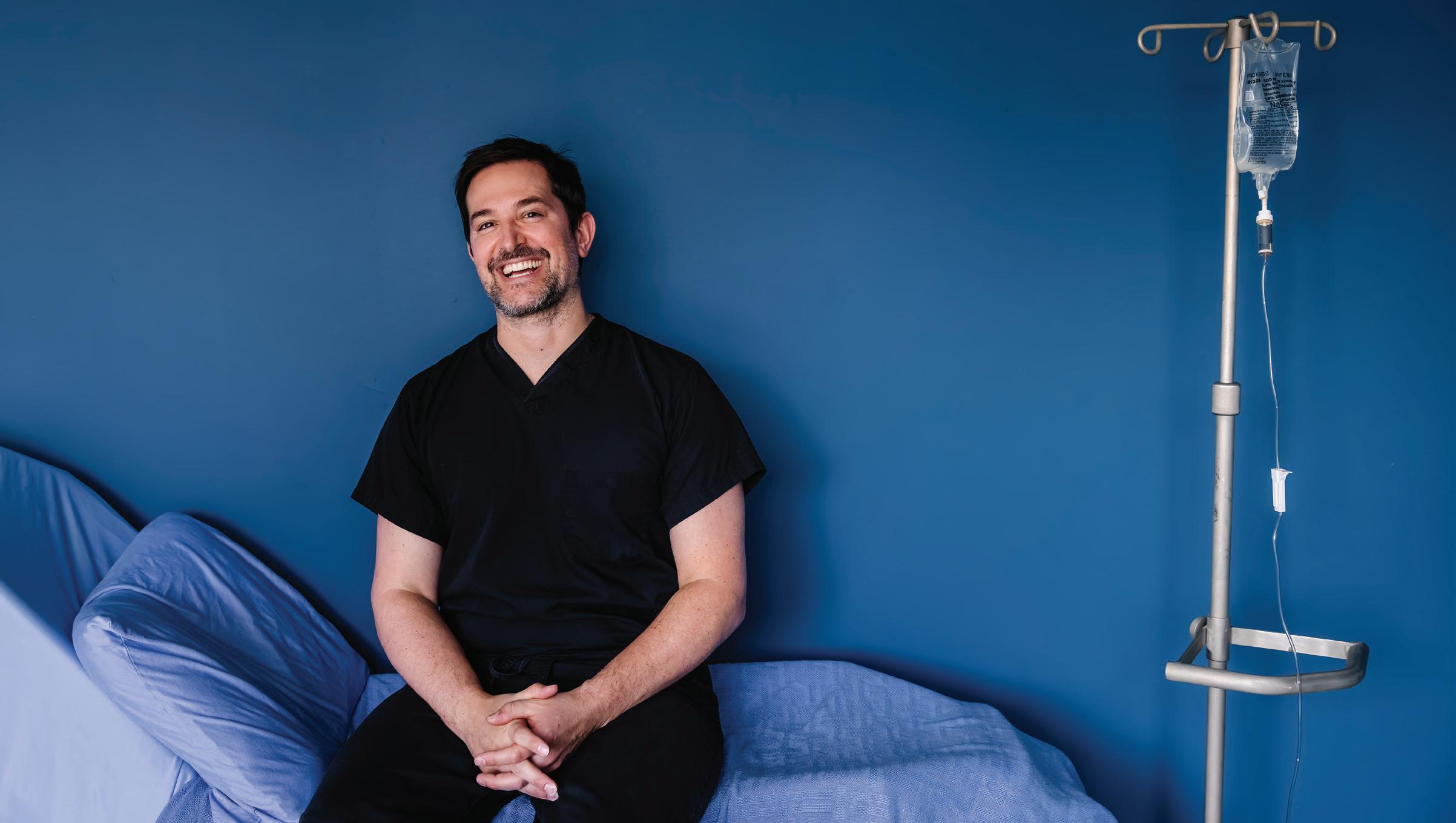
Expanding from 85 to 132, all inpatient rooms will be private, featuring leading-edge technology and state-of-the-art infection control.
The current Emergency Department sees over 37,000 patients annually. That number is expected to grow by 19% by 2028–29. The new ED will be three times larger to meet the demand.
The Intensive Care Unit will increase from 5 to 8 beds.
“We run into precarious positions when our ICU is full and we have to transfer patients elsewhere. Imagine being able to care for that many more patients. That, to me, would be the most important thing.”
—Dr. Michael Randazzo, Chief of Internal Medicine, A Day Away Podcast
Larger, state-of-the-art surgical suites and two procedure rooms will help reduce wait times for surgery.
New technologies in X-ray, CT, MRI, ultrasound, mammography, and more will dramatically expand diagnostic capabilities.
CGMH’s renowned Simulation Training Program, modelled after aviation protocols, will move into a purpose-built education facility.
“Our vision is a beautiful simulation lab with multiple spaces designed specifically for education.”
—Dr. Jesse Guscott, Rural Generalist and award-winning medical educator, A Day Away Podcast
Built with and For the Community
South Georgian Bay’s Hospital of Tomorrow isn’t just a new building—it’s a reimagining of healthcare in a fast-growing region. It’s about bringing care closer to home, improving outcomes, and ensuring that families, seniors, and newcomers alike receive exceptional care—without having to travel.
For families, it means peace of mind.
For seniors, dignity and comfort.
For newcomers and young professionals, a clear sign that this is a community that prioritizes health and well-being.
And for our healthcare workers, it means space, tools, and support to continue delivering world-class care.
Join the Movement
Building Tomorrow’s Hospital is a $100+ million community campaign—unprecedented in this region. It will be built with the care, innovation, and compassion we bring together today.
Tomorrow Is Built Today.
Learn more at: tomorrowshospital.com
Listen to the CGMH Foundation’s podcast A Day Away at cgmhf.com/podcast or wherever you get your podcasts.
















From its Centennial beginnings in 1967 to its presentday role as a vital cultural institution, the Tom Thomson Art Gallery reflects six decades of artistic legacy, community vision, and national identity.
By Aidan Ware | Images courtesy of the Tom Thomson Art Gallery
In the radical, turbulent, radiant summer of 1967, a small Canadian city located on the shores of Georgian Bay gave birth to what would become one of Canada’s most significant regional art institutions: the Tom Thomson Art Gallery. Founded as a Centennial project in Owen Sound, Ontario, the gallery was established in honour of Tom Thomson—a revolutionary painter whose works would become a cornerstone of Canadian cultural identity.
The legacy of Tom Thomson is not only in his art—it is also in the mythology that surrounds his life and death. Born in Claremont, Ontario, and raised near Owen Sound, Thomson developed his influential and iconic style of painting during his frequent trips to Algonquin Park, beginning in 1912 and continuing until his untimely death in July 1917, when his body was discovered in Canoe Lake under mysterious circumstances. Officially ruled an accidental drowning, speculation has persisted for over a century about the cause—was it suicide, murder, or misadventure? This enduring mystery only amplifies Thomson’s iconic status in the Canadian imagination—a symbol of raw nature, artistic genius, and unanswered questions. His death, like his art, invites contemplation about the Canadian landscape and the complexities of the human spirit.
“…I know this is paradise
Everyone old has dreamed of all their lives— Bonds and gestures pushed to one side Like an outdated combine harvester; And everyone young going down the long slide To happiness, endlessly... And immediately
Rather than words comes the thought of high windows
The sun-comprehending glass, And beyond it, the deep blue air, that shows Nothing, and is nowhere, and is endless.”
(Philip Larkin, High Windows excerpt, 1967)

as a powerful evocation of the tumultuous, lusty, and love-lost, shackle-shattering aesthetic of the times.
It was an era of revolutionary change on all fronts, filled with the vehemence of politics and yet a sense of extraordinary optimism. 1967 was undeniably a watershed year in Canada. It was the centenary of Canadian Confederation, and celebrations culminated at Expo 67 World’s Fair in Montreal. The National Gallery of Canada undertook an exhibition of 350 works of Canadian art spanning 300 years—the largest exhibition of Canadian art ever shown at the time. In politics, 1967 also saw the resignations of two prominent federal leaders: Official Opposition Leader John Diefenbaker and Prime Minister Lester B. Pearson. That year also marked shifts in youth culture, with hippies in Toronto’s Yorkville Village making headlines due to ongoing confrontations with police and City Council.
Considering art within the social and political contexts of the times in which it was created provides us with a path to a deeper understanding of its message and meaning. Exploring the broad artistic, social, and political environs of the years in which the Gallery was founded reveals a period of saturated complexity and transformation.
Completed in 1967, High Windows by poet Philip Larkin was one of the seminal pieces of poetry written during the legendary Summer of Love. It references middle-aged attitudes towards the younger generation and old customs being forsaken for new freedoms. It also expresses a powerful metaphor for the transcendence of the human mind and consciousness toward an unfettered state of worldly abandon—perhaps an allusion to psychedelic experiences or to the psychological release from past norms into a new, uninhibited and dis-habituated philosophical and spiritual way of being. It stands
By all accounts, Owen Sound was also in the fray of these times that were a-changin’, with a growing post-war population with divergent interests and tastes. Pictures from that time-period reveal bustling streets, burgeoning businesses, packed cafés, and a happening music scene. Styles of fashion and cars reveal a mix of squares and mods, with a balance of conservativism and a beat towards modernism. From out of the shadowy arches of old social archetypes and tropes, there was a large young population emerging with new ideas about gender equality and independence. It was also ten years since Owen Sound’s centennial which was not only one of the largest celebrations ever held in the region, but also served to provide a pivotal moment in which the identity of the city was more formally forged and honoured, a time when people connected to the core of the city’s heritage and aspirations.
In terms of art, 1967 in all its glory, celebration, and upheaval, set the stage for radical re-thinking, curatorial expansion, and the formation of new organizations across the country. In 2017, Doug Saunders wrote, “Once the bucket of Canadian identities had been









It can be yellow and murky or brown and metallic – just not right. Water Depot can turn it around! We have the knowledge, the right products and the motivation. At the cottage or at home, Water Depot can fix your water, whatever the problem is. Let our family help your family.


kicked over by 1967’s spasm of centennial joy, a cascade of new realities, new ideas, new institutions and new ways of living came flooding out. Fifty years later, we are still awash in their novelty. We are the children of 1967, the entirely new people who came out of that container.”
Indeed, the Tom Thomson Art Gallery was one of those institutions birthed from that container. Its origins trace back to The Lyceum Club and Women’s Art Association of Owen Sound, which purchased three oil sketches in 1929 from the Thomson estate and displayed them in public buildings until the Gallery was established. The original home of the Gallery was a church purchased by the Grey County Historical and Art Society in 1959. Eight years later, in 1967 the City of Owen Sound ratified construction of the Gallery as a Centennial project and officially opened the Tom Thomson Memorial Art Gallery.
Upon learning of the plans for an art gallery in Tom Thomson’s honour, Group of Seven member A.Y. Jackson famously remarked “I think this thing is of too great an importance to miss” – a statement that would later become memorialized in a tribute sculpture by artist Micah Lexier with those words in laser cut steel placed on the roofline of the Gallery.
Born into a changing world, the Gallery was anchored by the passion of the Historical and Art Society, which between 1959 and 1965 stewarded several pivotal donations that formed the foundation of what is now a 2,600+ piece collection of historical and contemporary Canadian art.
Twenty-five artworks by Tom Thomson were donated during those formative years by members of his family, establishing the core of the Gallery’s Thomson collection. It remains the fourthlargest public collection of Thomson’s work in Canada and the only collection built solely through direct connections with his family and friends - a legacy that continues to this day. In 2025, the Gallery received a remarkable bequest of 3 Tom Thomson oil sketches from Gloria M. and James E. Smith of Toronto which were originally gifted by Tom Thomson’s mother, Margaret Thomson, to her niece Charlotte (“Lottie”) Tripp Gilchrist, who was raised closely with the Thomson family in Leith. Passed down through generations, they have now found a permanent home in Owen Sound.
Thomson, the Group of Seven, and their contemporaries were only the beginning. The expanding collection continues to explore their lasting influence, as living artists offer new perspectives on the Canadian landscape and current issues. Among them, Bognor artist George McLean stands out for his masterful depictions of wildlife in natural habitats, combining technical precision with a deep reverence for the Grey County environment. His work builds upon the legacy of Canadian landscape painting while expanding its scope to include the intricate and intimate lives of the animals that inhabit it. Similarly, Flesherton based artist Rae Johnson reimagined the landscape through an expressionistic and often dreamlike lens, infusing it with emotional intensity and personal symbolism. Her work challenges traditional representations by layering memory, myth, and mood, offering a powerful,

contemporary counterpoint to historic approaches.
Since 1967, the Gallery has been led by 10 directors, each contributing to its evolution. Reflecting on the Gallery’s emergence during such a complex cultural moment, and on its continuing commitment to the visual arts in Canada, is both a privilege and a meaningful act of interpretation. The collection invites visitors to explore the layers of time, trends, and artistic practices—to find connections, disruptions, and new resonances.
The works in the Gallery’s collection do not exist as lone specimens—they speak to each other. They reach out through time towards us—to captivate and corroborate, to conspire and conceive of new and old realities.
Ultimately, the story of the Tom Thomson Art Gallery is the story of people. Of those who, in 1959, believed in the value of art and ideas. Of the Thomson family, who gave his work to the city. Of the hundreds of donors, staff, volunteers, and the thousands of artists who have participated in shaping the Gallery’s legacy. And it’s the story of the many, many visitors who have come through its doors—to find, to share, to see.
Art matters. It matters because it takes on the biggest conversations of our times – whether that’s oppression, genocide, racism, sexism, the environment, aging, or the pandemic. The language of art is the landscape of our lives and it’s personal. It’s social. It’s political. It’s human.
As we reflect on nearly six decades of vision, generosity, and cultural stewardship, the Tom Thomson Art Gallery stands not only as a monument to one of Canada’s most enigmatic artists, but as a living, evolving testament to the power of art in public life. Rooted in history, yet always reaching forward, the Gallery invites us into dialogue—with the land, with one another, and with the stories still unfolding.
In the enduring mystery of Thomson’s life and death, and in the vibrant legacy he inspired, we are reminded that art is never static—it is a horizon, and a higher window, urging us to look deeper, think wider, and imagine endlessly. E




















Alive with light, calm and mystery, John Wallace Burton’s canvases offer a realistic rendering of nature’s nuances as you step into his sweeping landscapes and delicately textured florals.
By Deena Dolan

As a self-taught artist, John Wallace Burton devotes considerable time, effort, and expertise to creating a realistic portrayal of his subjects while accurately emphasizing elements such as perspective, composition, lighting, and colour. Unlike other styles, Realism doesn’t adhere to formal artistic theory or stylization.
In John’s case, this is perfect. Throughout his many years of experimentation, he has perfected a somewhat simple, straightforward manner in his work that is brilliant. Utilizing a direct wet-on-wet painting technique, without glazing or an underpainting, his representations of hauntingly beautiful wilderness spaces, pristine waterways and soulful still lifes capture the striking natural beauty of Georgian Bay and beyond.
When one spends any amount of time with John, the energy he emanates is palpable. He is quite honestly a force and a true, in-the-flesh example of the power of positive thinking.
Born in 1931, the middle of seven children, John’s mother insisted on naming him John Wallace, in memory of a beloved great, great, great, great uncle who was a famous landscape painter in England. As it happened, John’s passion and ability for producing art became evident early on. In fact, he was ‘drawing’ on walls as a four-year-old and that ability for artistic impression has surrounded him always. As the only child in the family who showed an interest and a talent in art, a dear aunt, insisted that he should attend art school. Those were the Great Depression years however and formal education simply wasn’t possible. So, as a
young man, he entered the world of construction with his father and that became a successful, lifelong profession.
With his first wife Peggy, he fathered seven children and having grown up himself in a large and loving family, being a truly handson dad came naturally. Camping, fishing, sailing, diving, skiing and various other sports—there was no time for boredom in the Burton family. Among other activities, John was a competitive swim coach, a scuba diving instructor, and he raced sailboats.
In later years upon retiring, John settled full-time in this region lured by the active lifestyle that included skiing, windsurfing and mountain biking. Throughout it all, John’s artistic passions never waned as he explored every form of creativity possible from soapstone and wood carving to stained glass design, watercolour and acrylic painting. Working with oils has now become his favourite medium.
Interested in absolutely everything, John’s days have always been chock full of activities. These interests are evident in his paintings. One can sense his emphasis on close observation and the careful rendering of details that create a sense of authenticity—his work represents subject matter truthfully, without artificiality, exaggeration, or speculative elements. He pays close attention to the nuances of the natural world, striving to capture the necessary details. The result is a depiction that is believable and true to life, yet still imbued with a sense of his creativity and artistic expression.
John’s love of art spills over into his love for teaching others. Private and semi-private classes can be arranged through







Mountainside Gallery in downtown Collingwood. You would be amazed what can be achieved in one or two 4-hour sessions with John. The gallery, owned by Maria Lamon is dedicated to connecting established and emerging artists to art lovers and the local community. The Gallery offers an array of original paintings, photographs and sculpture. The artist styles represented are diversified, ranging from traditional landscape painters to contemporary mixed media abstract artists. Many of the artists are nationally and internationally recognized and awarded, exhibiting across Canada, the USA, and Europe. John Wallace Burton along with his wife Sue are Mountainside Gallery’s “In House” artists.
Armed with a love of the outdoors, camping and canoeing, many of John’s paintings have been produced on site—en plein air— as he observes the scene directly in front of him, capturing the true colours, light, shadows, and reflections as they change throughout the day and, John’s sketchbook is always at his side. Always.
John’s advice to other or ‘would be’ painters is simple; “Sketch. Sketch. Sketch.” Done on site, his sketches identify shapes, details, and values and when beginning a new piece back in his studio, John works with his sketch close by for reference. He will also have a photo on hand for a reminder of the colours. Once he has transferred his sketch onto the canvas, and he’s ready to begin
adding paint, he always begins with the sky, using brushes. “I love The Group of Seven”, smiles John, “but they painted their skies after they’d put in their trees and everything else—going up, over, under, and around—that was their style of painting. My skies are done differently.” The remainder of his paintings are worked using palette knives to expertly apply, mix and blend the oils in order to arrive at his desired rendition and texture.
John has strong thoughts about the need to know how to use tools correctly and effectively.
“With anything you do in life, the main thing is learning how to use the tools. If you don’t learn how to use the tools, it’s hard to achieve the end results, whether it’s cooking, construction, art or anything.” His palette knife is used with the finesse of a concert violinist. He also chuckles when he demonstrates how to properly use his ‘fluffy’ brush—a smallish, bristle brush that he soaks in turpentine then squashes, twists, and manipulates until it acquires the desired ‘fluffy’ state. It’s ideal for accurately representing leaves and other foliage. He achieves marvellous depth and richness of colour through mixing his own hues. “I never use green paint from a tube. I hate green paint. I make my own.” Likewise, with black. You won’t find it in his work since it appears dull, muddy, and flat. “There is no black in nature,” says John, “Mixing your own dark





















colours offers more flexibility and control over the final shade to make it truly authentic.”
Inspiration comes from everywhere but Killarney is a favourite. Moody or sunlit skies, twisted trees, expansive rocks and reflective waters intrigue him. The feeling of depth in his work is strategically captured by John’s expert application of pigments while always thinking light on dark. Light on dark. It works.
John Wallace Burton’s life remains purposely filled with joy,

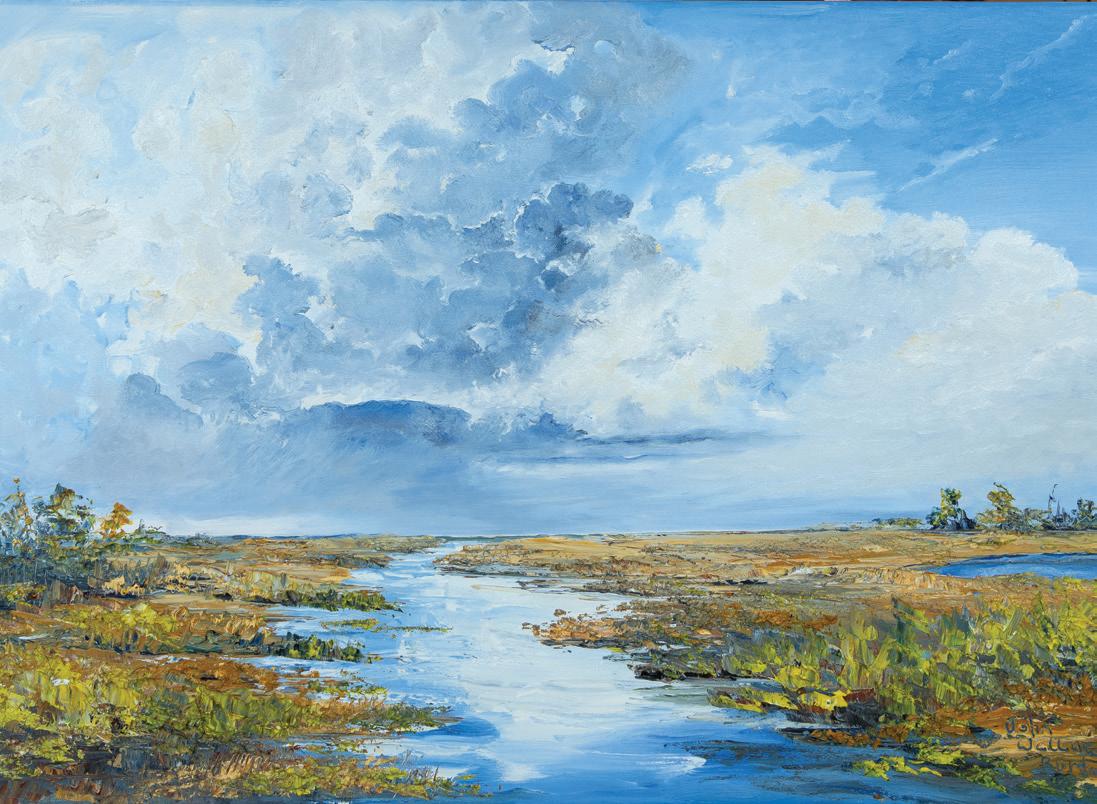
as are his paintings. He is truly an inspiration as he fills his days with activity, creativity and laughter. Drop by Mountainside Gallery to watch him in action or simply just to have a chat. In John’s sage words, “Always keep it positive. Don’t hang around with negative people.” E
For more information, please visit: Johnwallaceburton.com Mountainsidegalleryinc.com




A bold transformation from industrial steel to elegant living, this one-of-a-kind Blue Mountains home blends reclaimed materials, refined design, and remarkable attention to detail.
By Marc Huminilowycz | Photography by Clay Dolan

The humble steel container, originally built to efficiently transport goods around the world via ship and rail, has in recent years undergone a metamorphosis—repurposed into shelter for people in the form of portable offices, bunkies, tiny homes, and affordable housing options.
When Blue Mountains resident Luc Lafond and his wife Bojana purchased acreage at the top of Blue Mountain with breathtaking views over Georgian Bay to build their dream home, the couple decided on a radically different approach to traditional homebuilding, utilizing readily available steel shipping containers to create a comfortable, elegant, and climate-resilient 6,400-square-foot retreat.
Taking container homebuilding to another level was a natural fit for the couple. Luc is a successful entrepreneur and inventor with technical degrees in machining, drafting, and welding, and approximately ninety patents worldwide to his name. Hailing from Québec, Luc owned a manufacturing facility just north of Montreal, then moved to Mississauga, where he set up another
plant. Retiring from full-time work in 2005, he and Bojana, a former international project manager from Toronto, moved to the Collingwood area in 2015.
Entering the driveway off a gravel mountain road, the couple’s modern, flat-roofed, two-storey home—with contrasting grey walls and wood siding accents—stands solidly perched at the edge of the Escarpment, overlooking acres of farmland, forests, and the crystal waters of Georgian Bay, with distant shores including Christian Island on the horizon. “Basically, it’s a 20-container home, but it doesn’t look like it. It’s not supposed to,” said Luc of his creation, noting that his is the largest container home in Canada.
Built using carefully positioned and stacked “high cube” containers measuring 40 feet long by 8 feet wide and 9.5 feet in height (to allow for higher ceilings), the exterior of the home offers no hint of its steel structure. Rather than framing and insulating from the inside, as is typical with container homes, Luc decided to use expanded polystyrene foam panels on the outside—







seven inches deep on the walls and fourteen inches on the roof— to merge the exterior of the home and provide superior insulation from the elements while allowing for more space inside. The finishing touch on the exterior is Thermal CorkShield™, a sprayon, flexible product containing rubber and granular natural cork. “This product provides a first barrier against the wind and the cold,” said Luc.
The interior of the home is where the magic happens, with numerous unique design features cleverly (and purposefully) created by Luc, and components skilfully manufactured in his on-site machine shop. Many of the interior and dividing walls and ceilings are the exposed surfaces of the containers, each with different treatments to complement the rooms and their furnishings and, by virtue of their corrugated texture, create aesthetic light effects in the spaces.
“We call them living walls. Throughout the day, the natural light in the rooms accentuates these contours in the walls and ceilings,” said Luc. “The patterns shift as the day goes on, generating some really nice effects.” One such wall in the dining room is gilded with imitation gold leaf. Created by Bojana’s brother and the couple’s daughters, it faces east, imbuing a golden glow as the sun rises and shines through the large windows.
Most floors throughout the home are white oak tongue-and-groove—virtually seamless—manufactured in Germany, adding light and warmth to their surroundings.
“The floors have a hard, natural wax/ oil finish—no urethane or plastic,” said Luc. “You can actually feel the wood under your bare feet.” Beneath the floors, radiant in-floor heating keeps the home comfortable in the winter months. “Along with our well-insulated walls and roof, this creates a home that costs very little to heat for its size,” he adds.
Inspiration from a trip to Italy resulted in features used to soften the look of an otherwise constrained container design. The west living room wall features a curved drywall construction, creating a friendly and bright living space that accentuates the wall art.
Another Italian-inspired feature of the home is a beautiful Art Deco-style staircase in the centre of the home, leading upstairs to the bedrooms and spa. The railings combine two shapes—straight line and graceful curve— attached with square wooden balusters to open steps made of five-eighths-inch-thick steel. Looking at the staircase face-on, another subtle design detail becomes evident: its perspective is accentuated, with the bottom step measuring five feet and the top step four feet. Colour-controlled LED lighting embedded in the railings sets different moods throughout the day.
Throughout the home, there is a noticeable absence of trim where walls meet floors and around windows and doors. “This was a lot of detailed work, with exact measuring and trimming, but we like the clean look,” said Luc. “For me as a machinist, everything has to be fitting one hundred per cent, and no wasted space like unnecessary corridors. I designed every inch of this place. Every detail has a purpose.”
In every room, windows are strategically placed to provide natural light and views, and to avoid excessive heat gain in the summer. Elsewhere in the home, there are many other examples of the couple’s careful attention to detail: clever granite accent walls, an Italian design-inspired kitchen, hand-chosen and individually

MANY OF THE INTERIOR AND DIVIDING WALLS AND CEILINGS ARE THE EXPOSED SURFACES OF THE CONTAINERS, EACH WITH DIFFERENT TREATMENTS TO COMPLEMENT THE ROOMS...




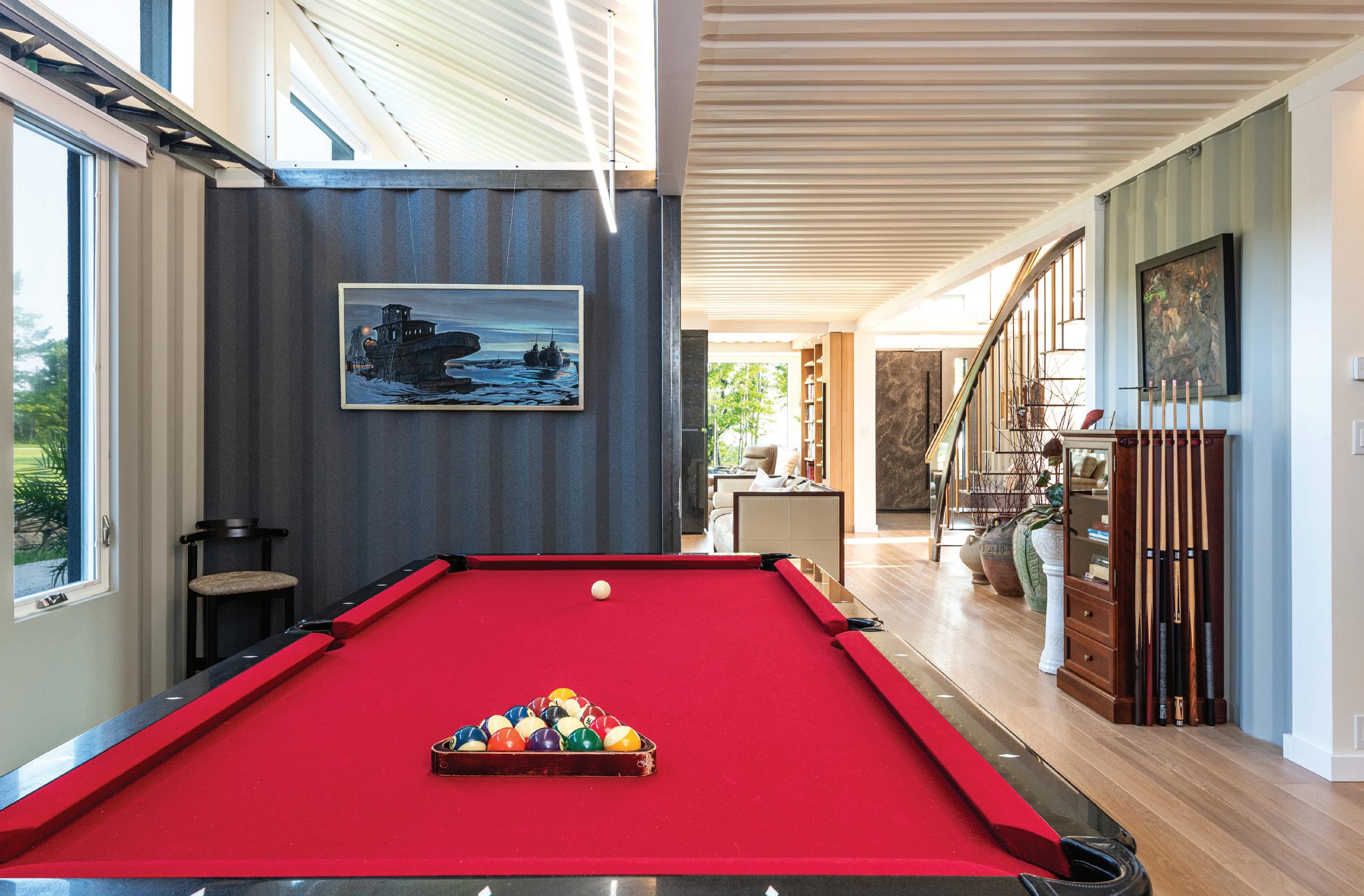


From
to

placed tiles, decorative arched steel ceiling support beams, and even a uniquely designed glass-enclosed elevator. The list goes on.
From its humble shipping container shell to the unique, luxurious, and practical details inside, Luc and Bojana Lafond have created a completely custom-made home in a spectacular setting, built to stand the test of time. “Our home is a statement that reflects my life’s work, our personalities, and our lifestyle,” said Luc. “This project has been a true family effort. My oldest daughter, Catherine, devoted several years working full-time on the build, pouring her heart into every detail. Our younger daughter, Emilija, and our brother, Misha, have given their time and unwavering support. Their dedication and hard work have
meant the world to us. Every step of the way, the creation of our home has been filled with thought, care, and love.” E
Shipping container: Seatainer Terminals, Kleinburg
Plumbing supplies: Noble Plumbing Supplies
In-floor heating: Alltech Climate, Alliston
Thermal CorkShield™: Vipeq Canada, Mississauga
EPS foam insulation: Legerlite Products, Québec
Electrical: Abtron Electric Ltd., Collingwood
Septic system: Infiltrator Water Technologies – Area Sales Manager: dkrauss@infiltratorwater.com
Other materials: Home Hardware, Collingwood
Lawn: Go Green Hydroseeding










Set on 25 private acres with panoramic views of Georgian Bay, this architectural gem blends industrial edge with natural elegance. Built from sea cans and reimagined into an opulent estate. The natural wood elements throughout blend seamlessly with the corrugated steel. With natural light in every room, this home lives as vibrantly as the landscape surrounding it.



Where Angels Go, by Lorne McDermott. Surreal Series. 30" x 36", oil on canvas.
Loft Gallery
18 Bruce St | Thornbury 647.296.9797 loftgalleryart.com
Earthy and elegant, the Maya Closed Pendant pairs light-stained mango wood with hand-wrapped jute rope in a modern diamond shape. A matte brass finish adds a subtle touch of shine.
Georgian Design Centre
84 High St | Collingwood 705.444.2100 georgiandesigncentre.ca


Inspired by Mediterranean charm, the new Baril VILLA kitchen faucet comes in warm gold and nine other stylish finishes.
LakeHouse Bath+Kitchen 603 Berford St | Wiarton 519.477.1900 lakehousebath.ca
Charlevoix, you never disappoint Collection 61, by Gordon Harrison. 16" x 16" framed, oil on canvas.
Mountainside Gallery
201 Hurontario St | Collingwood 705.444.2202 mountainsidegalleryinc.com




A fresh take on the classic console, this oak table features curved ends, bullnose detailing, open lower shelving, and three drawers—offering endless styling and storage possibilities.
Van Allan Design Centre 150 First St | Collingwood 705.293.4663 vanallandesign.com






Indian Head Cove, by Margarethe Vanderpas. 24" x 36", oil on canvas. Margarethe Vanderpas Gallery & Studio 24 Chetwynd Ln | Lion’s Head 519.433.2840 margarethevanderpas.com
Laid-back yet refined, this reclaimed pine coffee table brings effortless style to any space. Minimal, versatile, and timeless—perfect for dressing up or keeping it casual. Barebirch 920 2nd Ave E | Owen Sound 226.664.2273 barebirch.ca
Made in Canada, made for you. Visit Ravenna Forge to discover Toja Patio’s Aluminum Patio Sets— exceptional quality at an affordable price.
Toja Patio Ravenna Forge 495970 Grey County Rd 2 | Ravenna 705.888.3662 tojaliving.ca
Made in Canada, the Crown Verity Mobile Grill delivers commercial-grade performance in a compact design— well-suited for pros, small spaces, and grilling on the go.
Tom the Dreamer Mattresses & Appliances 21 Arthur St W | Thornbury 519.379.8440 dreamingtom.com
Add colour and excitement to your summer entertaining with these beautiful serving essentials. Katherine’s Château Champagne Bistro 243 Ste Marie St | Collingwood 249.882.0159 katherineschateau.com
Blast away years of grime with the Echo EPW-4200 Pressure Washer— ideal for cleaning decks, driveways, siding, and more. Easy to use, built to last.
Robert’s Equipment Chesley, Meaford, Owen Sound & Walton robertsequipment.com 11
Canadian-made Mursatt Chemicals keep your pool and spa water clean, clear, and ready to enjoy.
Water Depot
689 10th St W | Owen Sound 519.371.1111 waterdepot.com
Timeless Wonder, by Patricia Gray. 9.5" x 39.5" framed, acrylic on wood panel. Otter Thoughts, Mark Nadjiwan. 14" x 18", limited edition giclée.
Meraki Art
240 East Rd | Lion’s Head
705.475.6248 threetreesart.com blacksprucestudio.com
Crafted from rich mahogany, this entrance door blends timeless plank-style design with openable sidelights to welcome in the summer breeze.
Desboro Doors
135830 R.R. #1 Concession 8 | Desboro 519.363.5635 desborodoors.com









A fun-loving family swaps Muskoka living for an eclectic family retreat on Georgian Bay.
By Marc Huminilowycz |


Four years ago, a successful Oakville manufacturer and retailer of outdoor furniture, pergolas, and garden solutions decided, with his family, to trade their Muskoka vacation property for a four-season retreat on the water in the Southern Georgian Bay region.
“We were looking for a property we could use year-round, especially in the winter, that would give us the opportunity to enjoy some skiing, local amenities, the Village, and the outdoor activity we enjoy most—mountain biking,” said the homeowner. “This region offered us all of that. We love to go out as a family to cycle the many trails and country roads and enjoy the beautiful scenery here.”
The couple found a waterfront property for a reasonable price off Highway 26 at the foot of Georgian Peaks overlooking Georgian Bay, just steps away from a beach. For their home, they chose a bold, angular design from an architect they knew in Muskoka. “We wanted something really modern with lots of windows—funky and a little crazy, with a beach as our
backyard, to match our outgoing lifestyle and personalities,” they said. During the construction of their home, they stayed in a townhouse, which they purchased, located in an adjacent residential development.
Initially, the couple decided to build the 4,500-squarefoot home themselves, acting as general contractors with their team, Mike and Dominic from Greytex, and subcontracting tradespeople they knew. But the logistics of distance and weather dragged the project on, so to speed up construction, they enlisted Scott Fleming of JA Custom Homes, a Collingwoodbased builder, who helped with the project and accelerated it to completion in December 2024.
“We thoroughly enjoyed our experience with Scott,” said the homeowner. “He was always ready to take on any challenge, no matter what the request. Whatever we asked, Scott got it done, and he was always willing to share his trade contacts for whatever else we needed. In my opinion, JA Custom Homes is the best builder in town.”





Touring the completed home, the look is clean, modern, and uncluttered. White walls and black accents everywhere are contrasted with warm polished cement floors and natural white oak ceilings on the main floor. These floors, as well as concrete on the balconies, driveway, and walkway, are warmed with radiant in-floor heating for comfort and less snow shoveling in the winter. All of the white oak in the home, including the flooring and ceilings in the home’s second level, was purchased by the owner from his native country, Poland.
“I sourced all the white oak from a Polish supplier who had purchased a large quantity from neighbouring Ukraine just before the war started,” said the homeowner. “It was a great price with no tax, even with the shipping, and it wasn’t on any special deal. Things are just cheaper over there. I’ve been bringing windows from Europe for a while. As far as building supplies go, they really are a little bit ahead of the game.”
On the main level, large floor-to-ceiling windows overlooking the water bring in plenty of natural light. The centrepiece of the living room is a round, suspended grey metal wood-burning fireplace imported from France, which enhances the modern space while imbuing warmth on cold winter nights. Because wall space is limited in the room, the owners installed a giant movie screen that retracts into the ceiling, with a projection TV system for family movie nights and sporting events. The system, along with the home’s other AV components and home
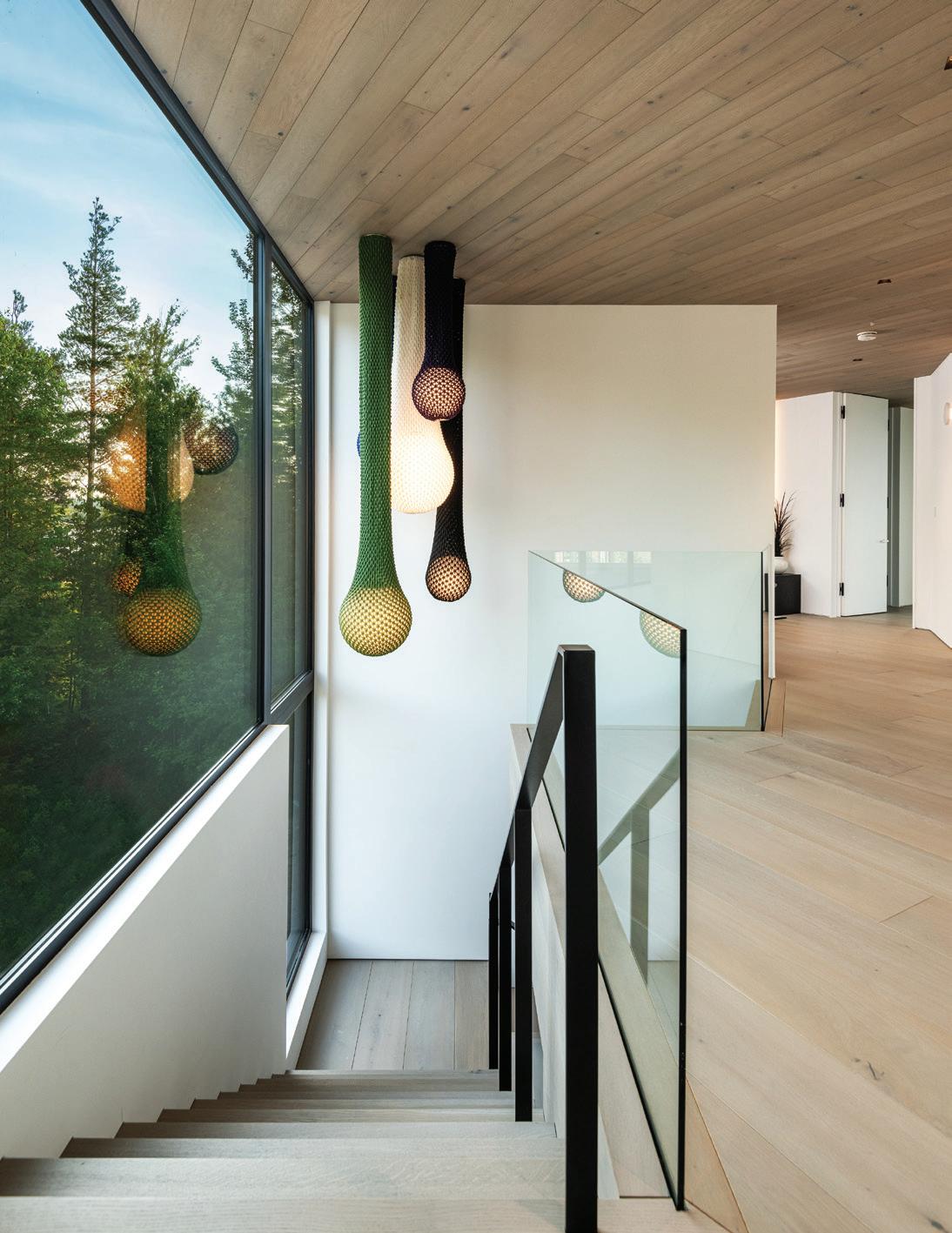

automation, was designed and installed by Simcoe Audio Video in Barrie. “The company’s president, Shaun Hart, is a great guy who did an amazing job accommodating our lifestyle,” said the homeowner.
The kitchen in the home is simple, yet dramatic in design, featuring a white quartz counter, sink, and range set against a spectacular white marble wall, framed by sleek black cabinetry. In front of this is a large white quartz island with black base and seating for four, with a dark wood dining table that seats eight.
Adjacent to the kitchen is the owner’s favourite room—a walk-in pantry stocked with treats and a coffee bar.
A third room on the main level serves as an office and a gym, complete with exercise machines, weights, and suspended “heavy bags” for boxing and kickboxing workouts. Because the home does not have a basement, the large attached garage, also with heated floors, does double duty as the home’s “play area,” with a bar, fridge, stools, large TV, ping-pong table, and other games.
Going up the stairs to the second floor of the home, a large window to the south offers a spectacular, unobstructed view of Georgian Peaks. This level contains the master bedroom with floor-to-ceiling windows overlooking the beach and the bay, a walk-in closet, and a luxurious en suite bathroom featuring an unusual round tub formed out of the same micro cement as the floors. This was created by Collingwood decorative concrete company Força Inc., who had the tub 3D printed and installed, then finished with the floor on site in concrete, creating a




“We wanted something really modern—funky and a little crazy—to match our outgoing lifestyle and personalities.”



seamless, volcano-like effect of the tub rising from the floor.
The couple’s bed, beyond king-size, consists of two side-by-side double mattresses in a frame, designed for a better night’s sleep. “When one of us tosses and turns, the other one is undisturbed, and it’s big enough for the whole family to sleep together,” said the owner.
The second floor also contains three additional bedrooms for guests and their kids (one with bunk beds) and a den with a TV— all accessible from one long white-oak-floored hallway with picture windows overlooking the Peaks. Details throughout the home add to its clean and modern appearance: air registers and ceiling returns with pop-out inserts matching the floors and ceilings to make them virtually invisible; discreet, flush-mount light switches and controls on the walls; and an absence of window and door trim and baseboards.

Interior designer Kate Sadler of The Local Studio Ltd. in Port Carling describes the project as a full-scope, ground-up design that she and her team led from the initial architectural concepts through to the final styling moments. “Our studio handled everything from interior architecture and electrical planning to custom millwork, furniture specification, and art curation,” Sadler
explains. “Every element was deeply informed by the client’s vision to ‘bring the funk’ they desired, while anchoring the space with natural materials and a sculptural edge.”
Sadler describes the home’s architecture as a bold, angular language that offered a strong foundation. “We built on that with a tactile interior story,” she said. “The client wanted soul, contrast, and creativity, so we curated a palette of natural textures and custom forms that gave weight and warmth to the modernity. The




Like


Powerful simplicity and elegance. Lutron keypads declutter the wall and improve controllability.
Lutron is unrivaled light, with precision shades, and handcrafted controls will help you see your home in a whole new way with limitless possibilities. Simcoe AV brings it all to life, reach out today for a free in home consultation.


“The views act as dynamic art pieces, shifting with the light and seasons...”




result is a space that feels elevated but lived-in, sculptural yet soft, and entirely personal, with that sprinkle of funk in every space, without being overdone.”
“We were intentional in maintaining visual flow and balance—keeping materials grounded and interiors quiet enough to let the landscape speak. The views act as dynamic art pieces, shifting with the light and seasons, so the custom furniture and built-ins were scaled to frame, not compete, with the glazing.”
According to Sadler, the project was about more than aesthetics. It was about building a home that reflects character, playfulness, and a deep connection to place. “Every finish, fixture, and form were chosen or custom designed not to follow trends, but to express the client’s individuality and support local craftspeople,” she explains. “We don’t believe in one-size-fitsall design; we believe in creating homes that feel like a lived-in extension of our clients’ energy. We had so much fun working with this fam-jam. It was truly a beautiful collaboration. Even their young daughter had lots of input and such thoughtful insights. In fact, I wish she was old enough to hire!”
All settled in while finishing up small details around the home, the Oakville family is ready to enjoy their first summer of fun and adventure on the roads and trails and by the water, taking advantage of the four-season lifestyle that Southern Georgian Bay has to offer. E
Builder: Initially managed by the homeowners with help from Mike and Dominic of Greytex; completed by JA Custom Homes, Collingwood.
Architect: Foreshew Design Associates, Port Carling
Interior Design, Décor & Lighting: The Local Studio Ltd., Port Carling
Bathrooms: STAX Specialty Hardware (fixtures and hardware); slab surfaces from Ciot
Kitchen: Stone surfaces from Cava Surfaces and Marble Tech Inc.; plumbing fixtures by Aquavato; cabinetry by Chervin Kitchen & Bath, Oakville
Windows: Drutex S.A., Poland
Furnishings & Art: Curated by The Local Studio, featuring Whittington & Co., Montauk Sofa, Riverview Design Solutions, Fullerton Metal Fabrication, Atelier Arking, Nick Thomm, Pompous Fox Wood Co., and Bails Studio
Appliances: Goemans Appliances, Oakville
Entertainment, Alarm & Home Automation: Simcoe Audio Video, Barrie
Electrical: Journey Electric, Collingwood
Plumbing: Brooksey’s Services, Singhampton
Concrete Floors & Decorative Concrete: Cooksville Concrete
Finishing Inc. and Força Inc., Collingwood
Hydronic In-floor Heating & HVAC: One Stop HVAC, Barrie























In today’s world, the traditional idea of a single “home base” is quickly evolving. With flexible work schedules, remote access to business tools, and a surge in digital platforms designed to support working from anywhere, more people than ever are embracing the seasonal lifestyle—moving fluidly from one inspiring destination to the next.

This shift, once reserved for the ultrawealthy or retirees, has become accessible thanks to technology, vision, and the right support systems. At Seasonal Properties, we’ve seen how monthly and longer-term rentals are transforming travel, investment, and lifestyle choices for modern families, entrepreneurs, and experience-driven professionals. Whether it’s golfing in Scotland, hiking volcanic peaks in the Azores, skiing on the Escarpment, or swimming in Georgian
By Sean Landreth, CEO & Founder, Seasonal Properties and Founder, Property Valet
Bay, our clients aren’t just vacationing—they’re living seasonally.
One of the most exciting changes we’ve seen in real estate and hospitality is the transition from static homeownership to dynamic, experience-based living. Technology has removed many of the logistical barriers that once made seasonal living difficult. Cloud-based booking platforms, international payment gateways, remote security systems, digital concierge services, and instant communications mean that guests can enjoy high-quality seasonal stays with peace of mind— whether they’re in Ontario, Portugal, or the Scottish countryside.
A family from Collingwood can now book a farmhouse on the cliffs of São Miguel and work or school remotely while immersing in a new culture. A couple from Toronto might spend spring playing links courses in Scotland, renting a luxury stone
cottage near St Andrews for a month, complete with fast Wi-Fi, curated experiences, and local hospitality. These aren’t quick vacations—they’re immersive lifestyle chapters.
My own journey into seasonal living started right here in Ontario’s Georgian Bay region—a place that continues to shape our company’s ethos. With four seasons, world-class skiing, championship golf, fresh lake air, and the charm of towns like The Blue Mountains, Meaford, and Collingwood, Georgian Bay has always been a microcosm of seasonal living at its best.
In winter, families cozy up in Scandinavian-inspired chalets, with days filled with skiing, snowshoeing, and hot chocolate by the fire. In summer, those same properties open their decks to lake views, morning rounds at Lora Bay and Cobble Beach, and evening walks along the waterfront trails.
Monthly or seasonal rentals let travellers slow down, engage with their surroundings, and feel part of a community, even if just temporarily.
It’s not just inspirational—it’s livable. With great restaurants, local culture, and more professionals choosing to work remotely from their chalets or rentals, it has become a Canadian case study in seasonal living.
At Seasonal Properties, we’ve taken this philosophy global. As more people opt for experiences over material accumulation, we’re curating month-plus stays in places that offer not just beauty, but meaning. The Azores—a rugged Portuguese archipelago—is one such place. Guests live in lava-stone cottages surrounded by hydrangeas, explore waterfalls by day, and soak in hot springs by night—all while managing their businesses via seamless tech infrastructure. My wife Eva and I experienced this recently, and it was surreal and inspiring.
While we were there, I thought of another favourite spot— Scotland—which offers a different kind of richness. Between rounds on storied golf courses, guests stay in restored estates or shepherd’s huts in the hills of Fife or the Cairngorms. These are places steeped in heritage, yet fully equipped for modern living.
What ties these destinations together is the quality of life they offer—the ability to settle in for more than just a quick getaway. Monthly or seasonal rentals let travellers slow down, engage with their surroundings, and feel part of a community, even if just temporarily.
As this mindset grows, we’re seeing the rise of the lifestyle investor—individuals or families purchasing properties not just for return, but for the lifestyle they offer. These properties are often in destinations they love to return to, but when not in use,
they’re available through platforms like ours to other travellers.
It’s a win-win model: owners gain flexible income and long-term appreciation; guests enjoy access to unique properties they can treat like home. With management systems in place—from full-service marketing to guest relations and property oversight—owners can be as handson or hands-off as they like.
We’re helping Canadians purchase cottages in the Azores, ski homes in B.C., and waterfront escapes in Nova Scotia—all tailored to their lifestyle ambitions. These properties are part of a larger, curated ecosystem that guests can move between, season after season.
The backbone of seasonal living today is smart, intuitive technology. Our properties feature high-speed internet, remote workspaces, smart locks, climate control, and 24/7 support. We also offer 3D walkthroughs, drone previews, and curated guides so guests can book with confidence.
But I want to do more. I want our clients to feel even more comfortable booking these amazing opportunities. We’re always looking for tech that will help us improve.
On the back end, our systems let homeowners view bookings in real time, track income, and coordinate with our team for updates, deep cleans, and guest feedback. Technology doesn’t just enable seasonal living—it elevates it.
In the wake of global shifts and new work paradigms, more people are asking: Where do I truly want to live, and how often? Increasingly, the answer is not one place, but many—connected by seasons, interests, and values.
Seasonal living allows people to design a year around what matters to them—skiing in the winter, golfing in the fall, or being closer to family over the holidays. It brings new perspective, healthier routines, and a deeper appreciation for the world’s diversity.
At Seasonal Properties, our goal is to keep building a trusted network of extraordinary homes, supported by technology and local expertise. We envision a world where a well-designed lifestyle isn’t about being tied down—but opened up to cultures, landscapes, and moments that define us.
To those curious about living seasonally, I encourage you to take the first step. Whether it’s winter in Georgian Bay, a month in the Scottish Highlands, or summer in the Azores, the world is closer—and more livable—than ever.
You bring the dream. We’ll bring the keys. E



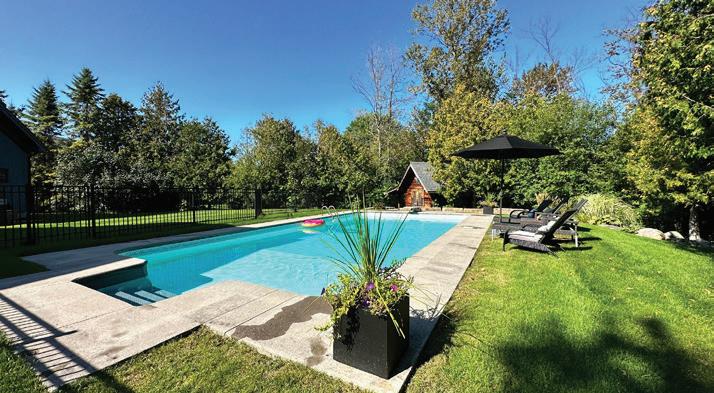



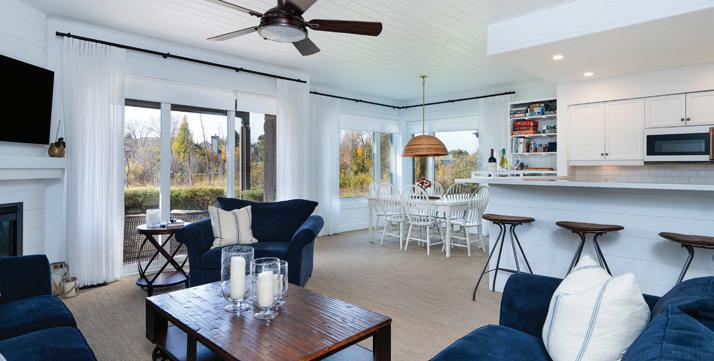



























B u y i n g o r S e l l i n g ? C o n n e c t w i t h
o u r t e a m f o r a l l y o u n e e d s
T o v i e w a l l o u r
l i s t i n g s s c a n h e r e















































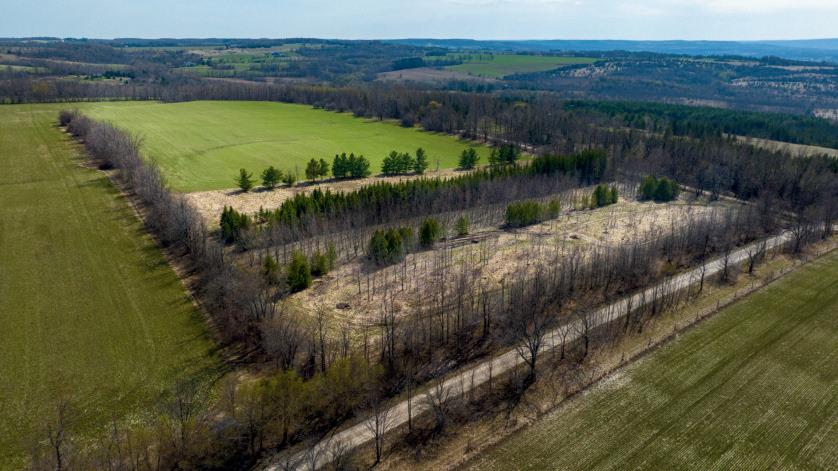
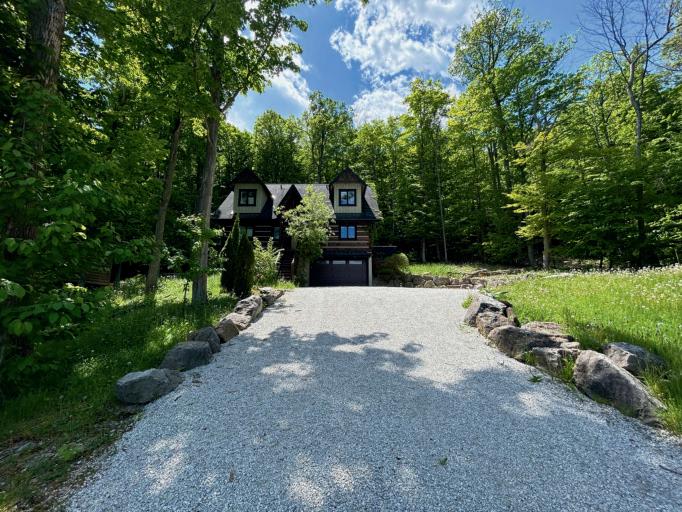


“I’m always looking for new compositions in my travels, and spotted an interesting angle from the marina that framed the sunrise with the Collingwood grain terminals. Just as I lined up the shot, I heard geese flying along the shoreline and managed to capture them as they passed through my frame.”
Mark O’Grady is a passionate photographer whose creative journey spans coast to coast. Originally from the Maritimes and now based in Collingwood, Mark’s work ranges from action-packed sports imagery to the quiet intricacy of macro photography. He produces prints from his body of work, often custom-framing them himself. His latest focus is portraiture, where he continues to explore new ways of capturing people and place. View more of his work on Instagram @ogphoto.
You could be featured in an upcoming Aftershot! Tag us on Instagram or Facebook using @EscarpmentMagazine or #EscarpmentMagazine for a chance to be featured — plus, you’ll be entered to win a gift card to a local business!





Let’s chat about 50 acres of opportunity waiting for you in Grey County – but where to begin? Nestled between Lake Huron and Georgian Bay, this hidden gem offers the perfect retreat while keeping you close to picturesque small towns and the conveniences of Owen Sound. Here, the lucky will find a 4 bedroom, 2 bath modern brick bungalow surrounded by woodland, rolling hills, orchards, a pond, walking trails, and a 3-hole golf course because... why not!? The real fun is what you’ll find scattered about the sprawling property – like the barn begging for a dance or the 30x60 fully equipped workshop. Embrace the farm-to-table lifestyle with a thriving raised vegetable garden, then dine under apple trees festooned with twinkling lights that rival the starry sky. Visiting family and guests will love glamping in the luxuriously updated Airstream parked in its final happy place. This one is for entrepreneurs, nature lovers, and introverts who love to entertain. Learn more about the benefits of farm life at: jamesmcgregor.ca or scan the QR code below.

Max Hahne
Broker, IRES**, RSPS†
James McGregor Sales Representative, CIPS*




